A Day At The Boyce Thompson Arboretum, Arizona

Each time I'm able to visit the desert, I like it more. In fact, I'm starting to love what the desert offers. I'm a northern Great Plains guy and never thought I would be this excited about the desert ecosystem, and all the great plants there are to enjoy. It's just wildly different from what I'm used to in Zone 4.
The photos are from the Boyce Thompson Arboretum and the Gold Canyon area in Arizona where we stayed for several days on a short vacation. The video below shows the highlights of our great day exploring this desert arboretum.
The area we visited is Zone 9 on the temperature charts, which often reaches mid-20s F for winter lows.
Barrel Cactus
The first three are in the Ferrocactus genus. Ferocactus is Latin for "fierce cactus," which looks to be a pretty good description judging by the stiff spines you see here.
From L to R:
- Red Spined Barrel Cactus, Ferocactus pilosus
- Fish Hook Barrel Cactus, Ferocactus wislizeni
- Emory's Barrel Cactus, Ferocactus emoryi
- Owl Eye Cactus, Mammillaria karwinskiana
- Golden Barrel Cactus, Echinocactus grusonii
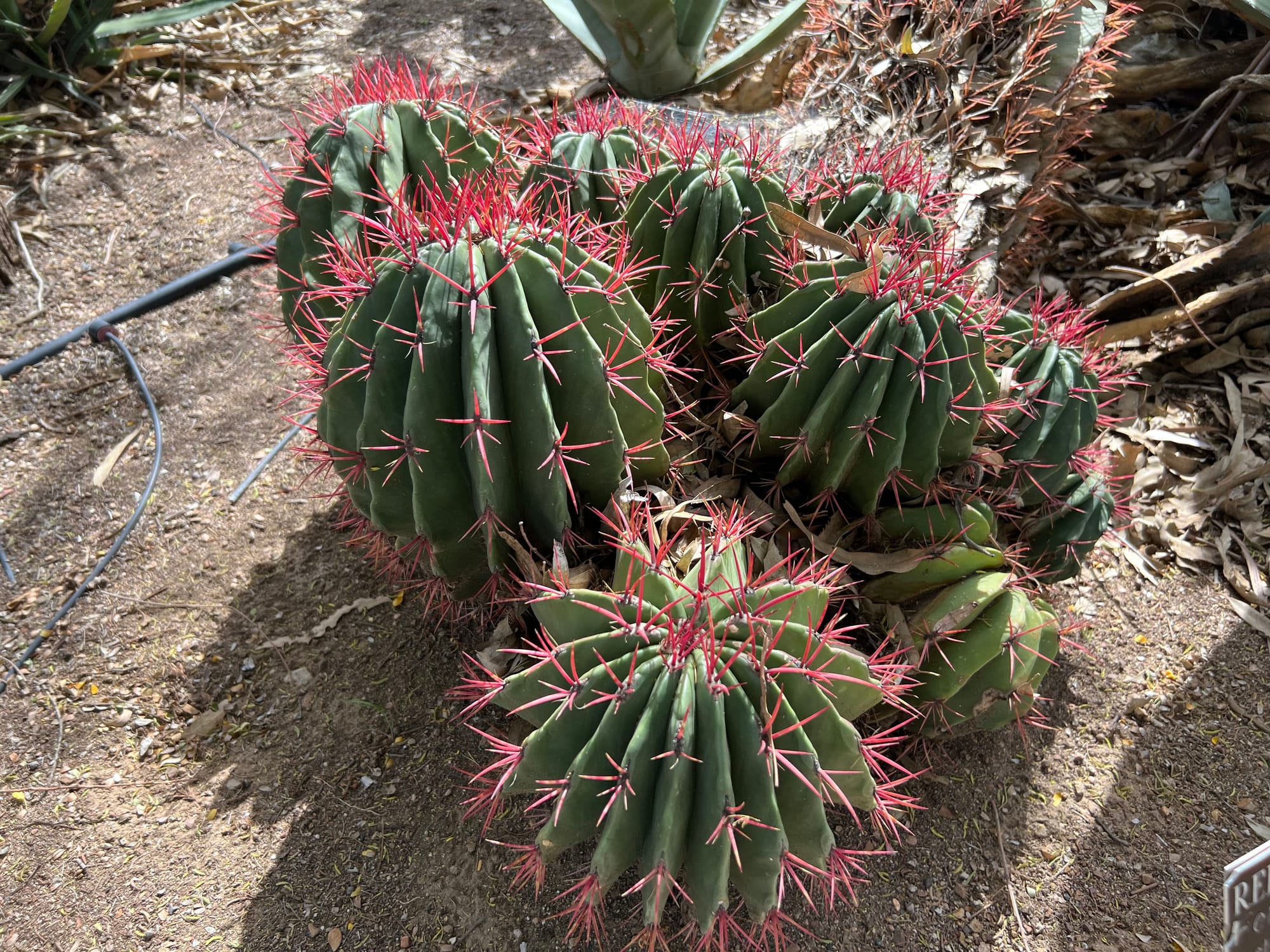
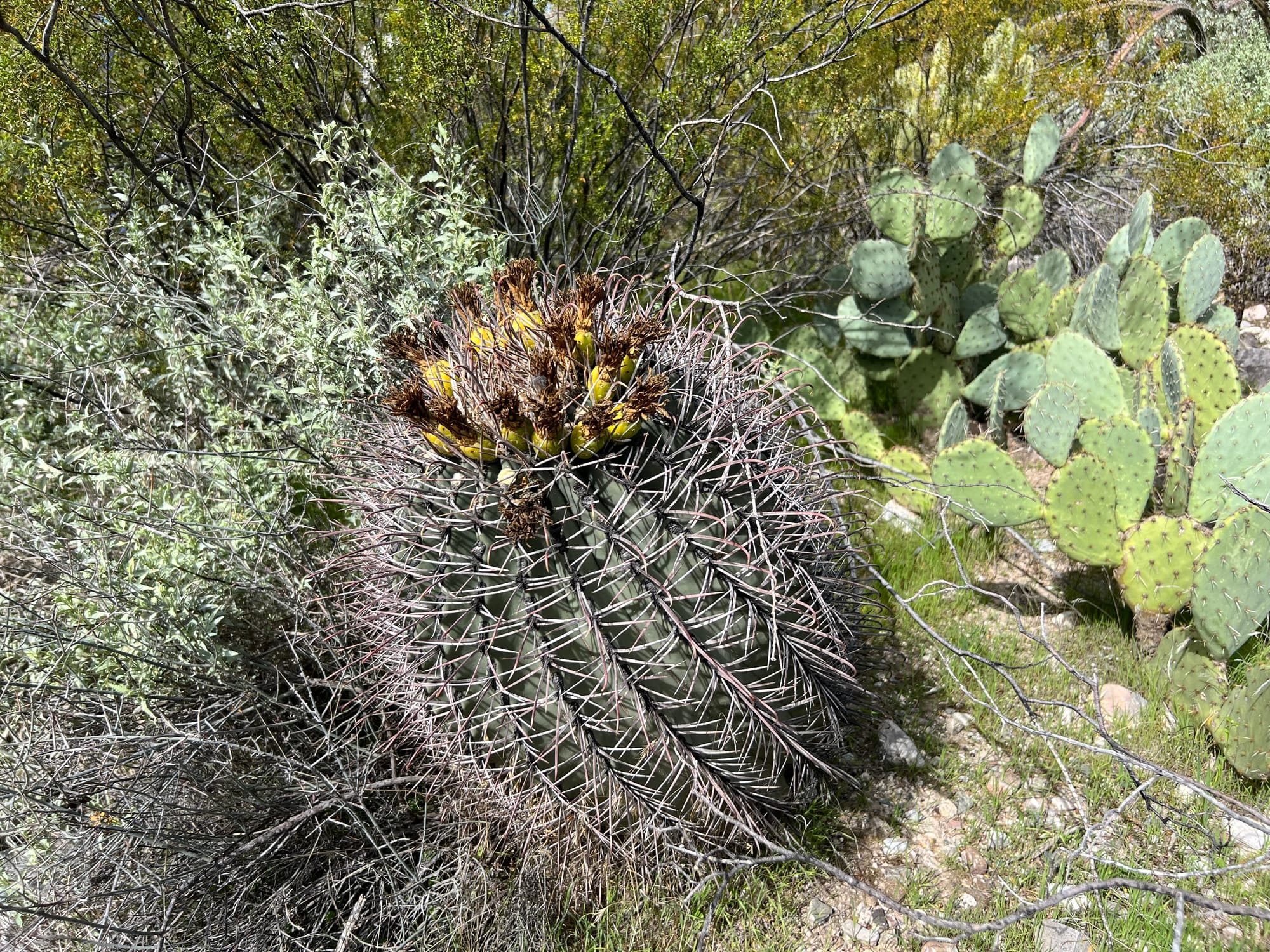
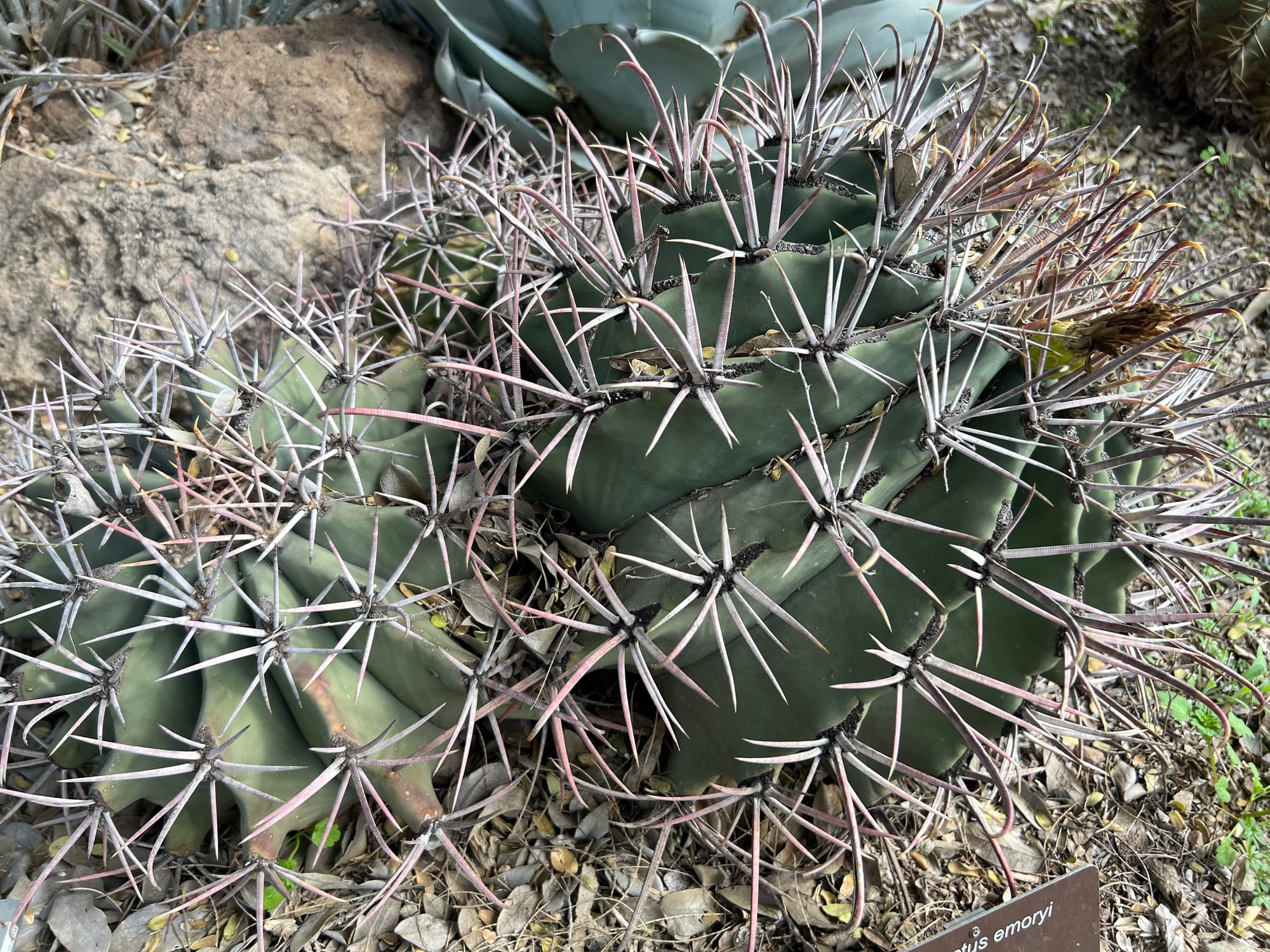
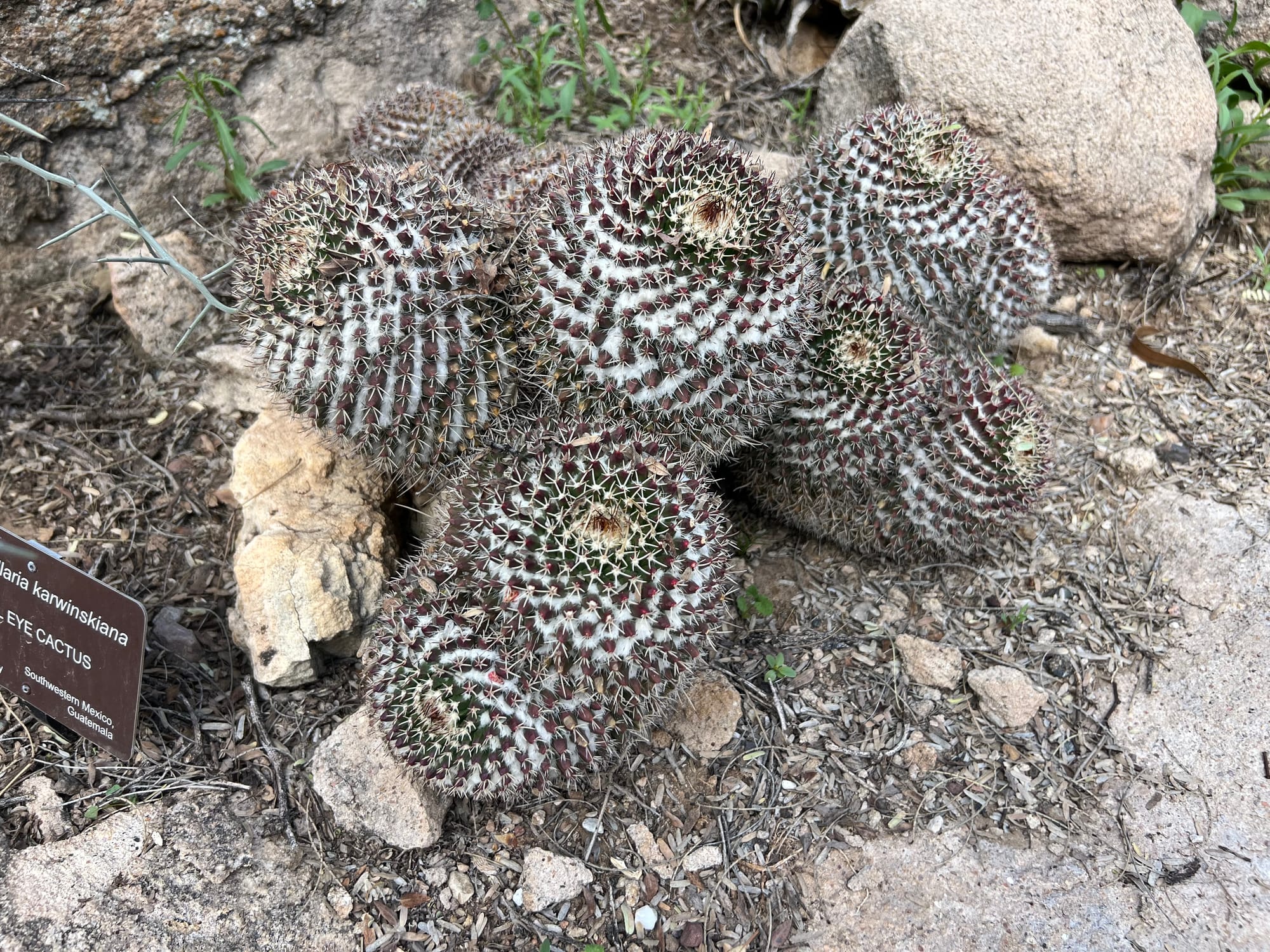
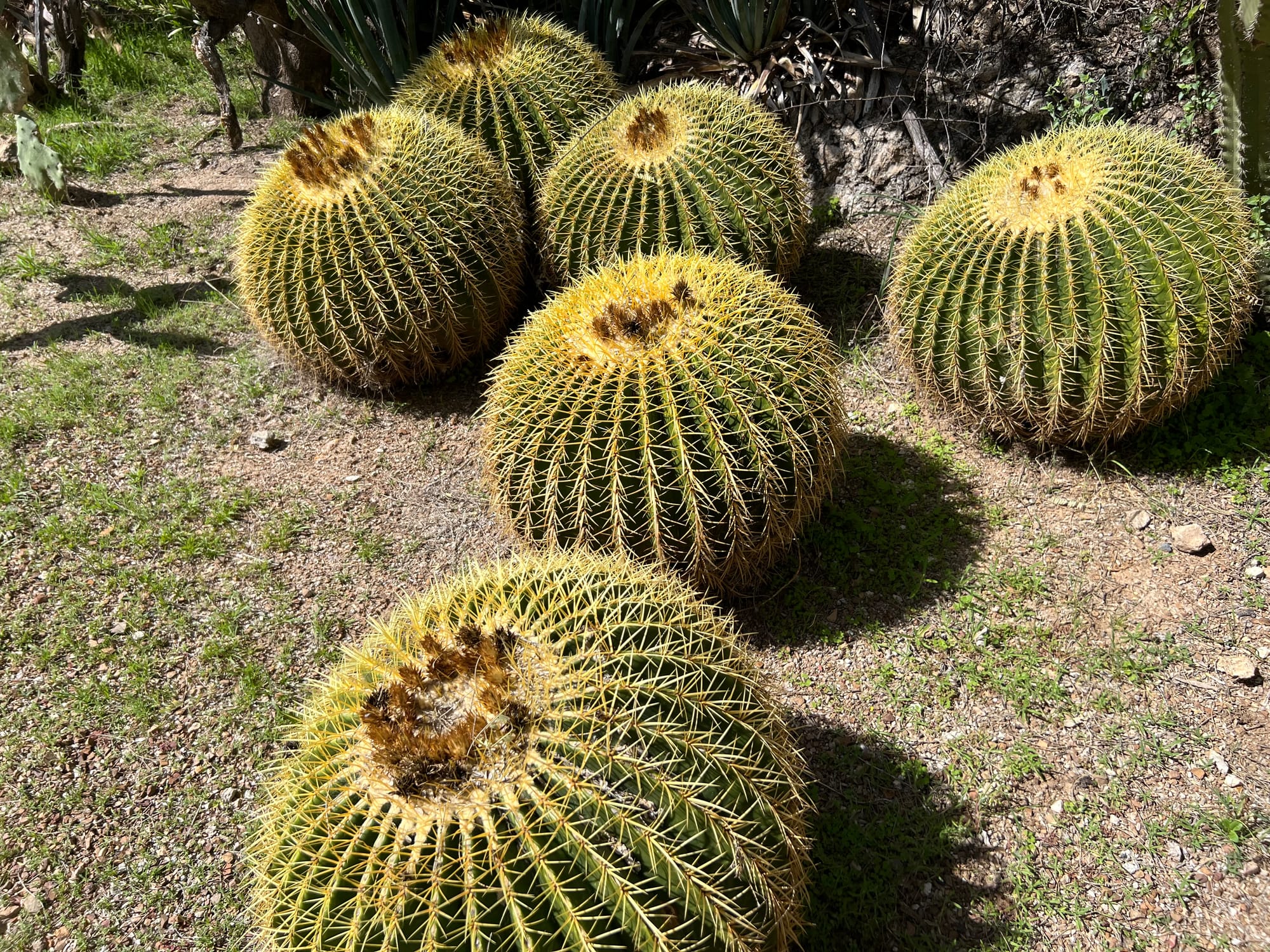
Red Spined - Fish Hook - Emmory’s - Owl Eye - Golden Barrel
The barrel cactus is a good source of emergency water, that is, if you can get through the spines. The barrel or globe cacti have beautiful flowers. Unfortunately, we're a few weeks early on our trip to see the desert blooming.
Agave or Century Plant
I found it interesting when researching that this Agave flowers only once at the end of its life of about 20-30 years. But it does produce adventitious shoots from the base, allowing it to continue growing. They can get 6-10 feet in height and width, but the stalk can reach 25-30 feet when they flower. Agave are often called aloes, but aloe leaves are softer, have gentler spines, and are smaller than aloes.
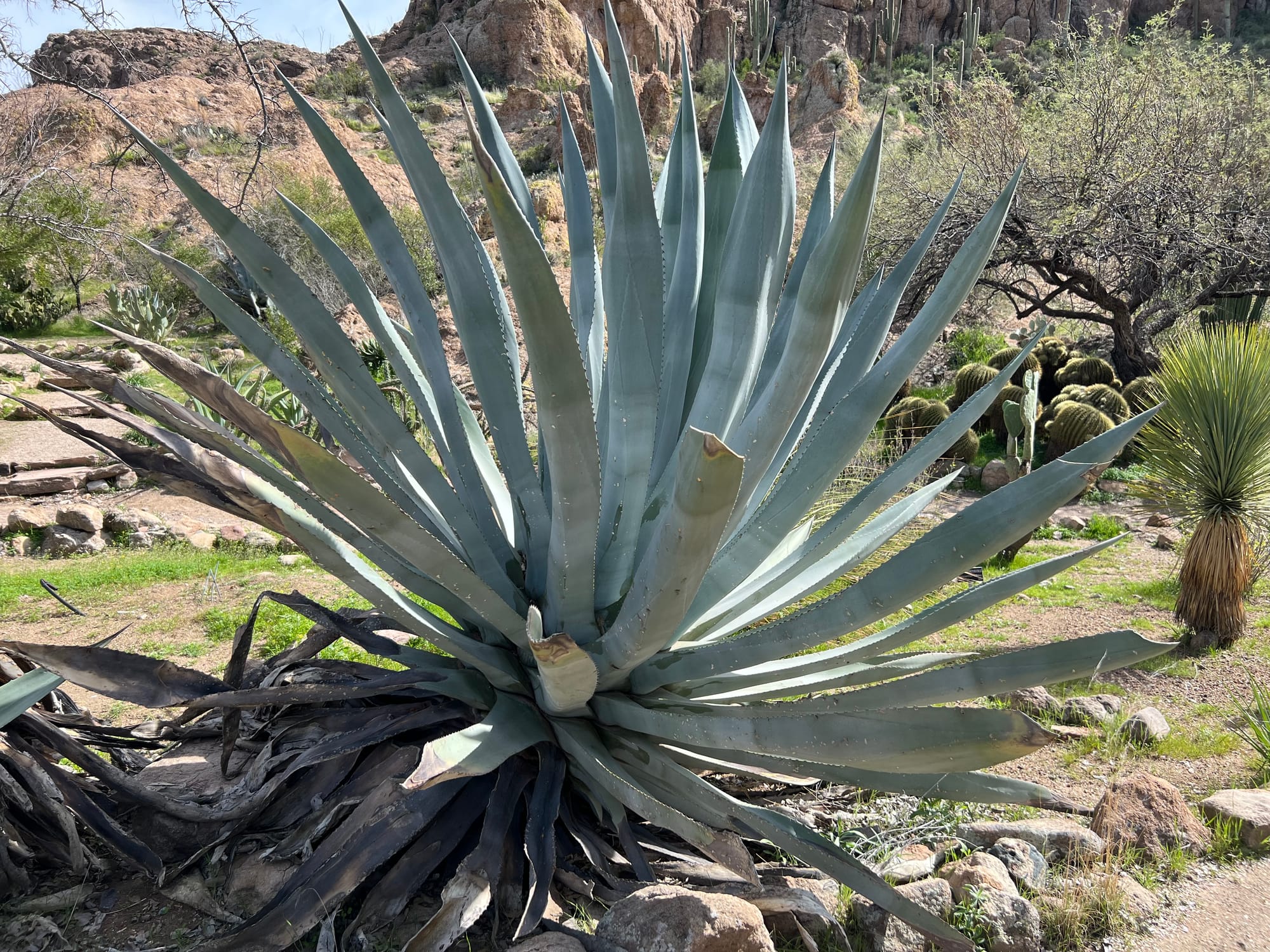
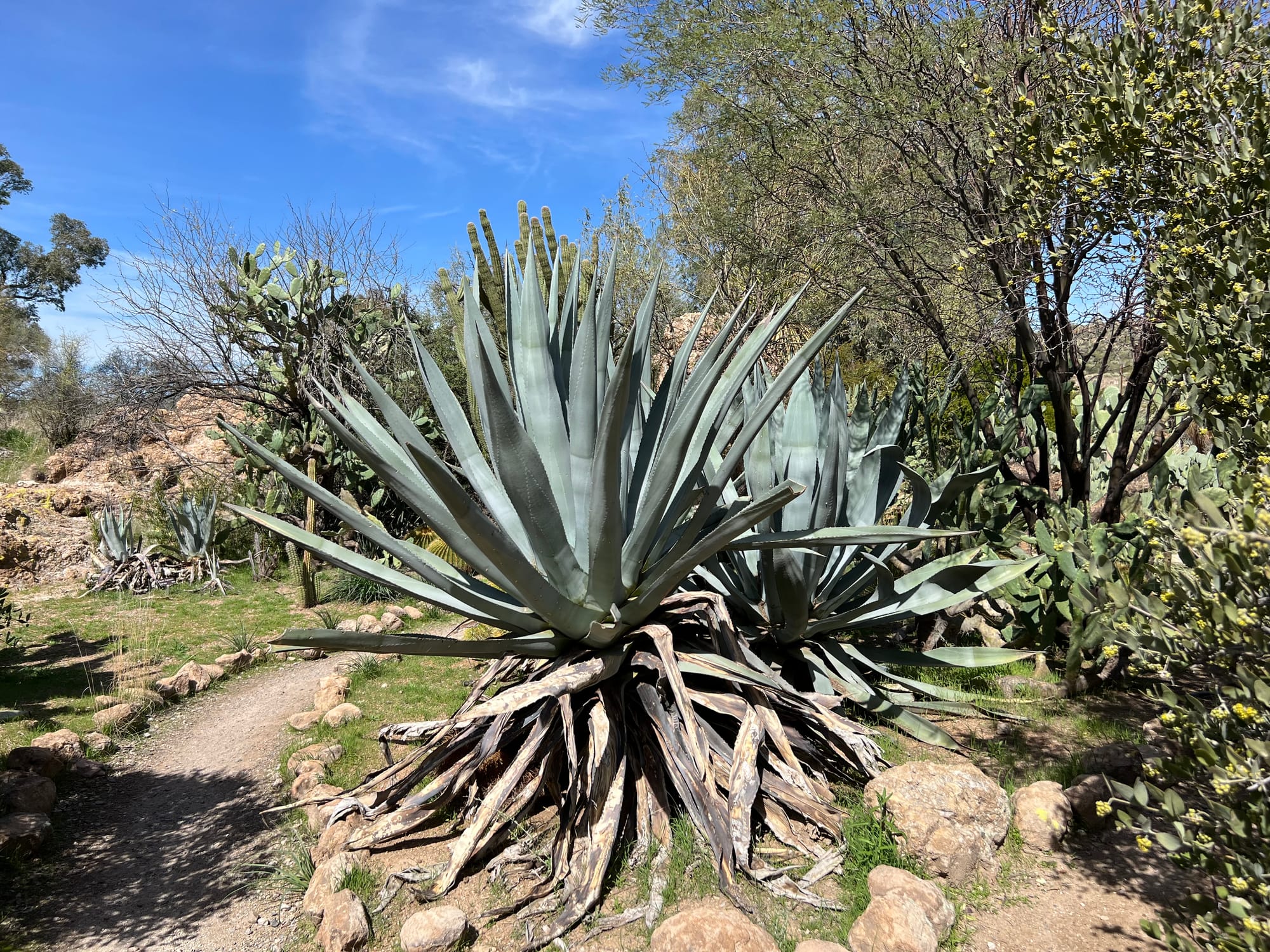
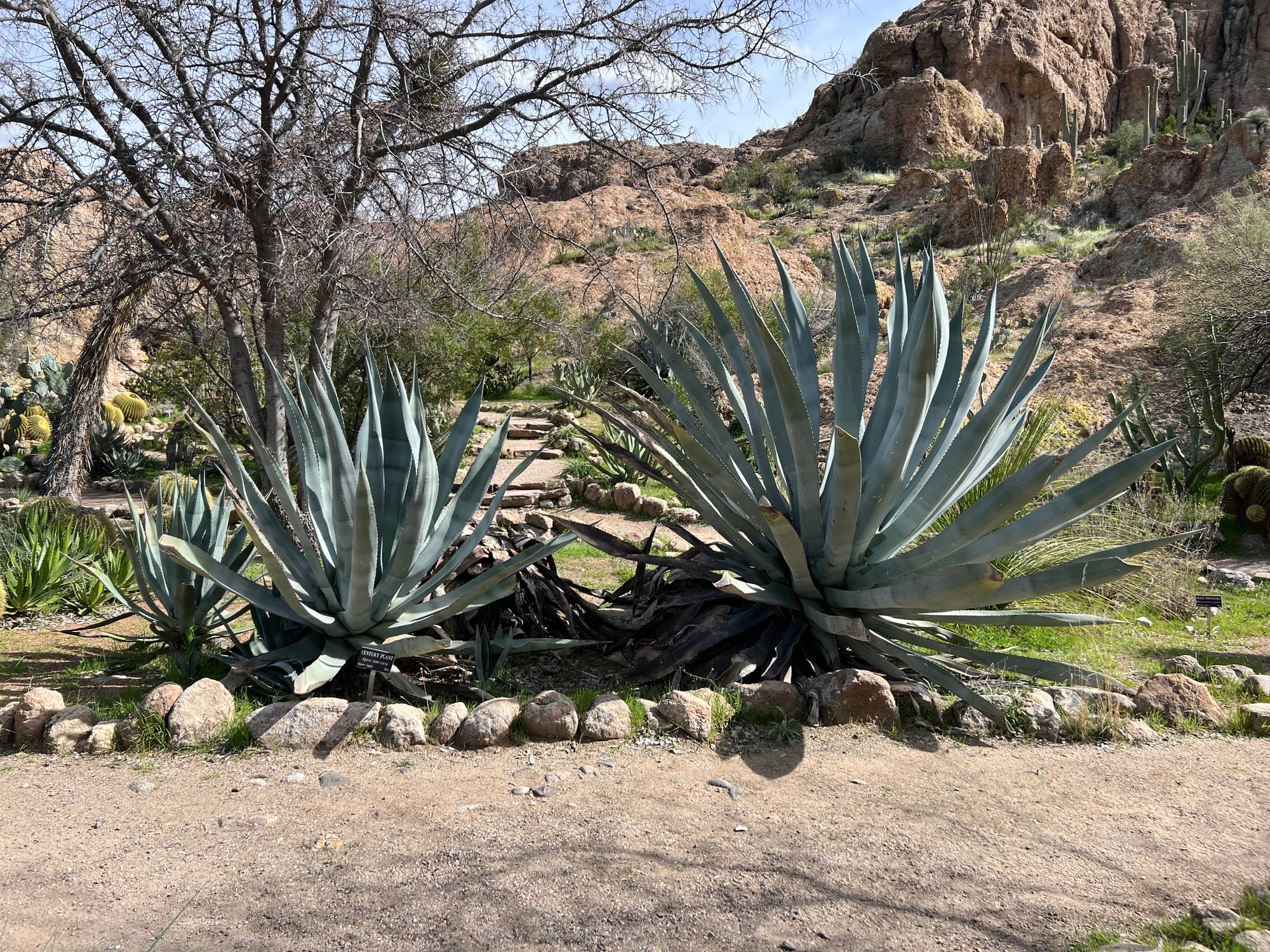
Agave or Century Plant (Agave americana)
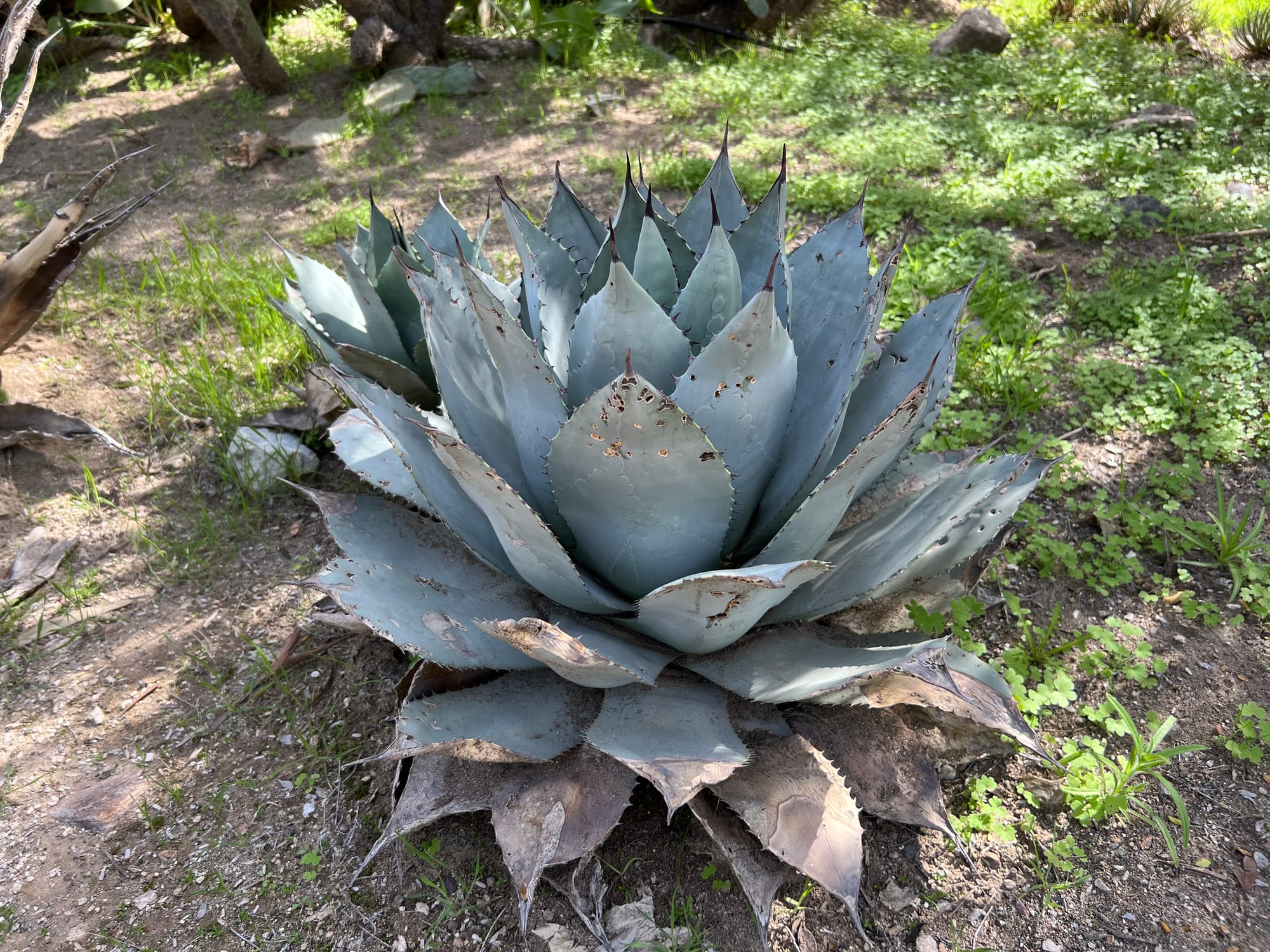
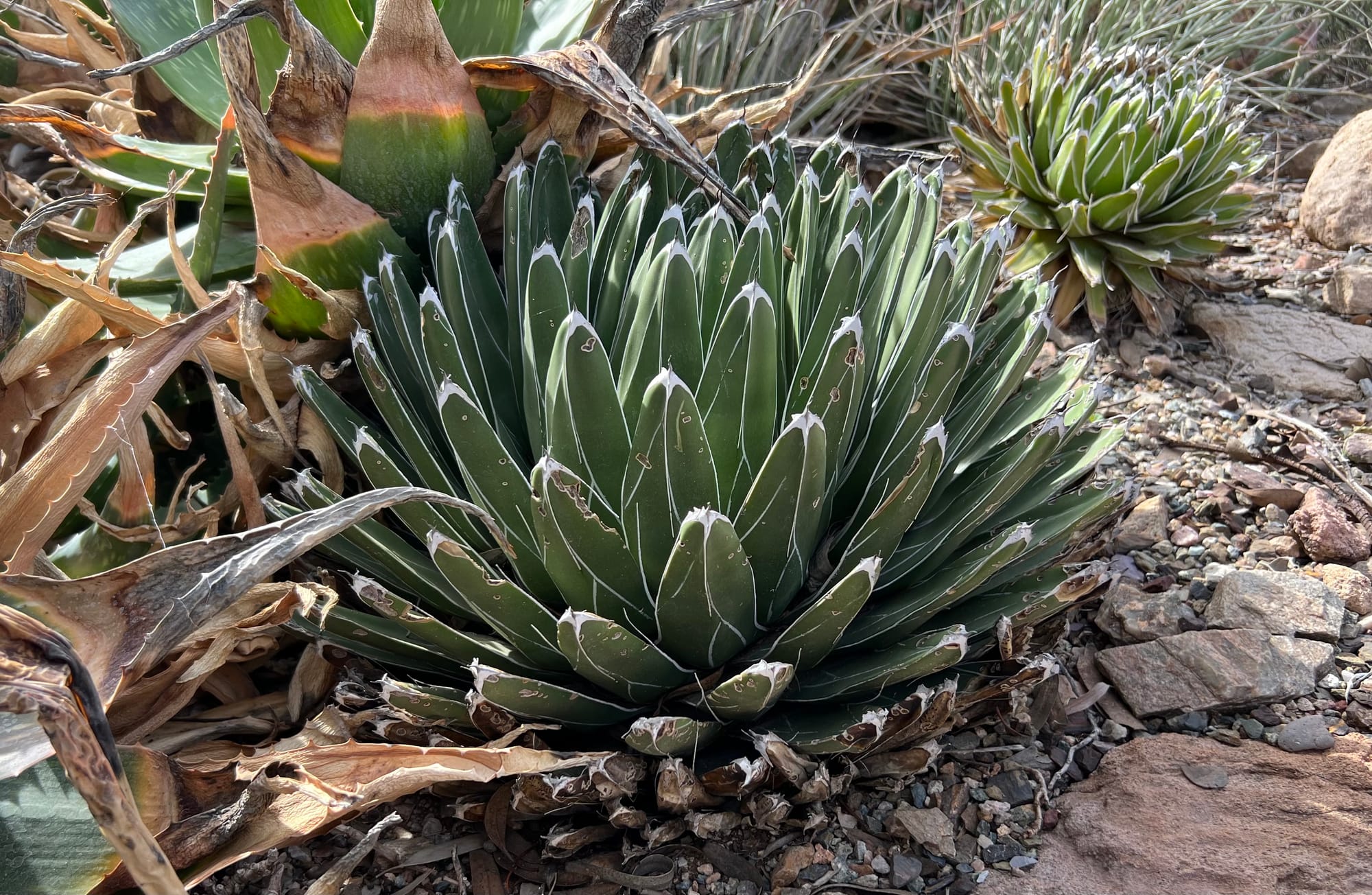
(L to R) Artichoke Agave (Agave parryi var. huachucensis) - Queen Victoria Agave (Agave victoriae-reginae)
Aloe
Flat Flowered Aloe has a flattish flower and can get over 10 feet. It will draw in hummingbirds; after the flower is complete, a papery thin seed disseminates in the wind.
Cape Aloe can also reach over 10 feet. It is also known as bitter aloe and has medicinal qualities, one of the main things aloe is known for.
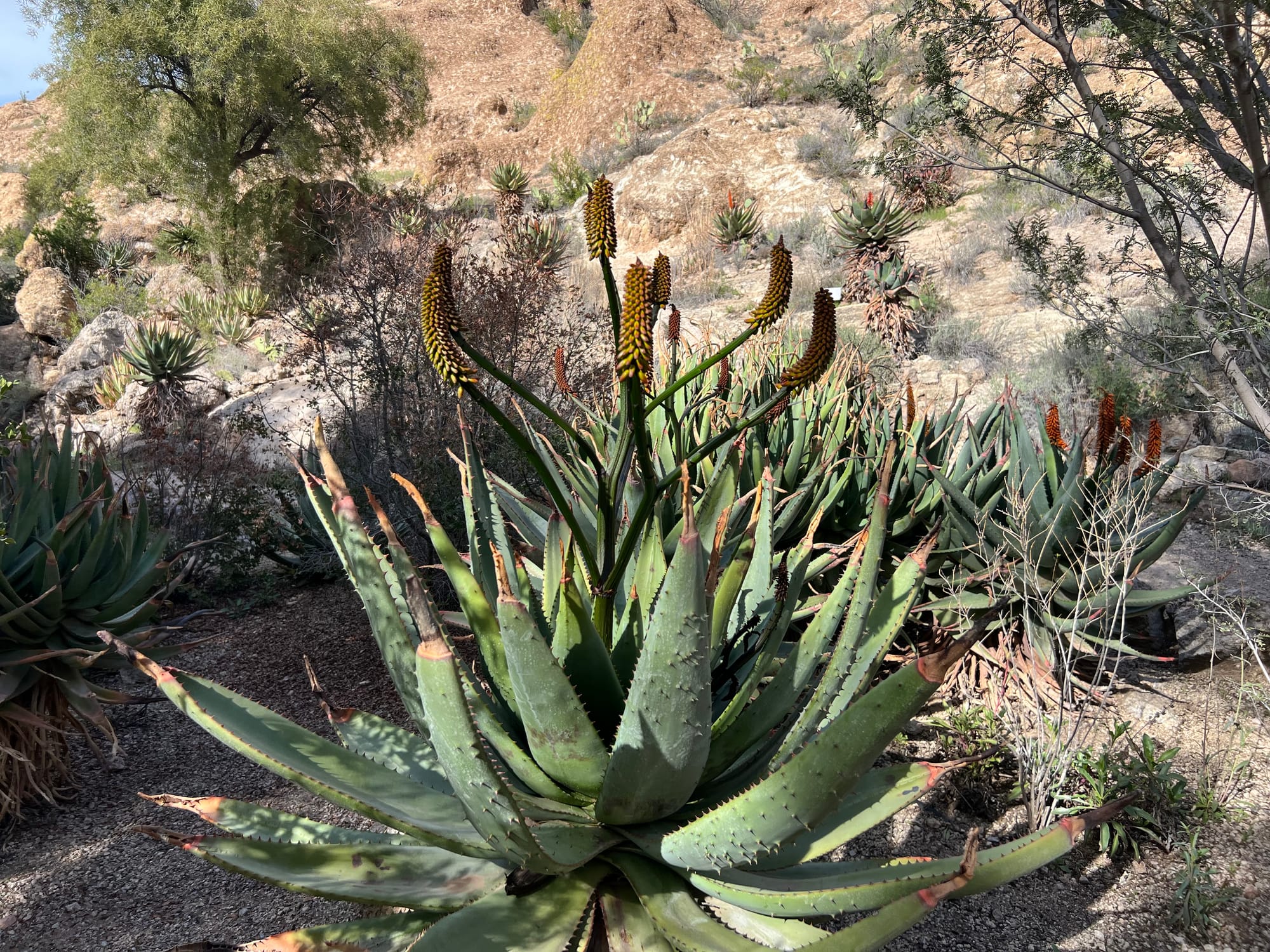
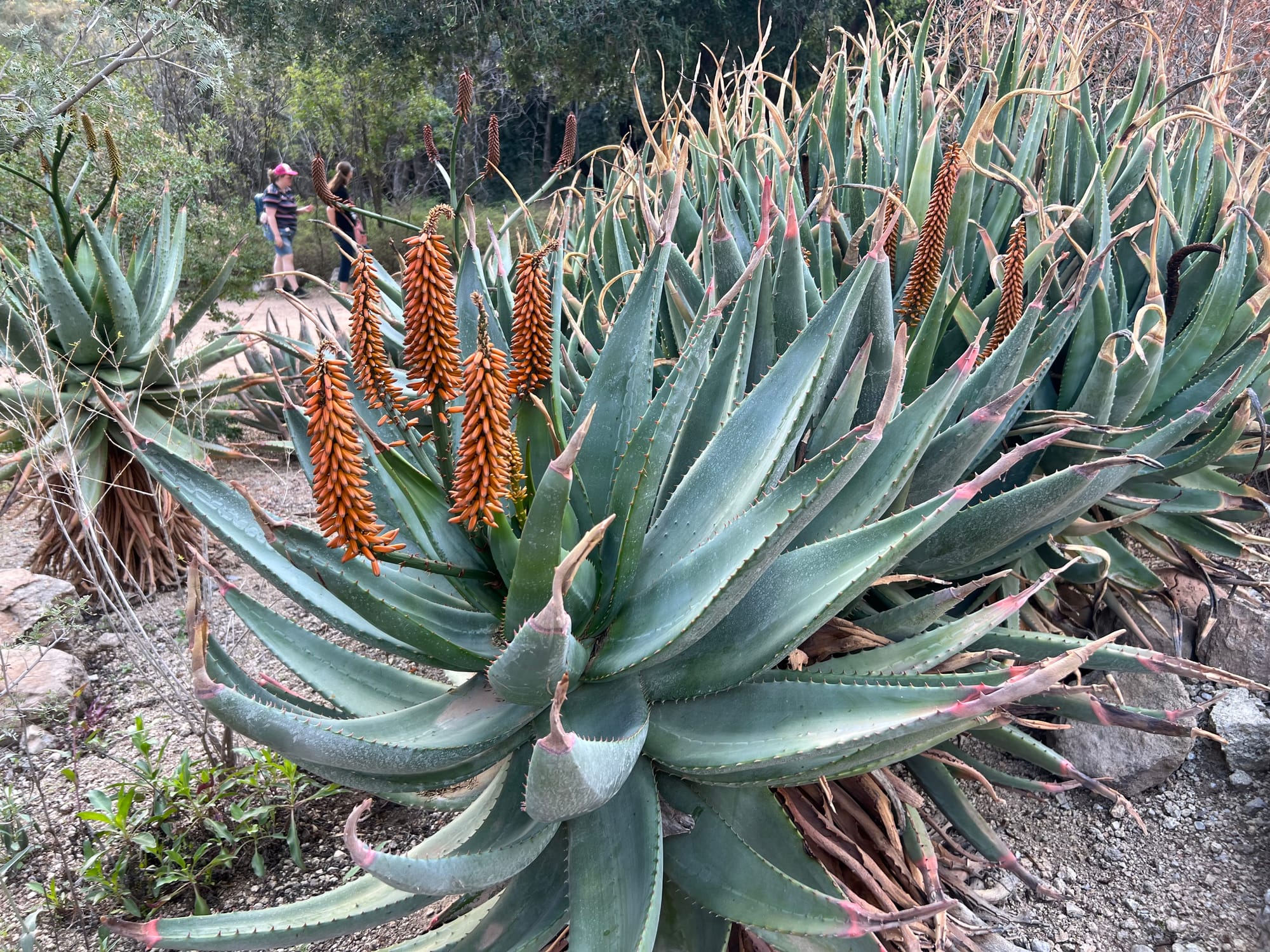
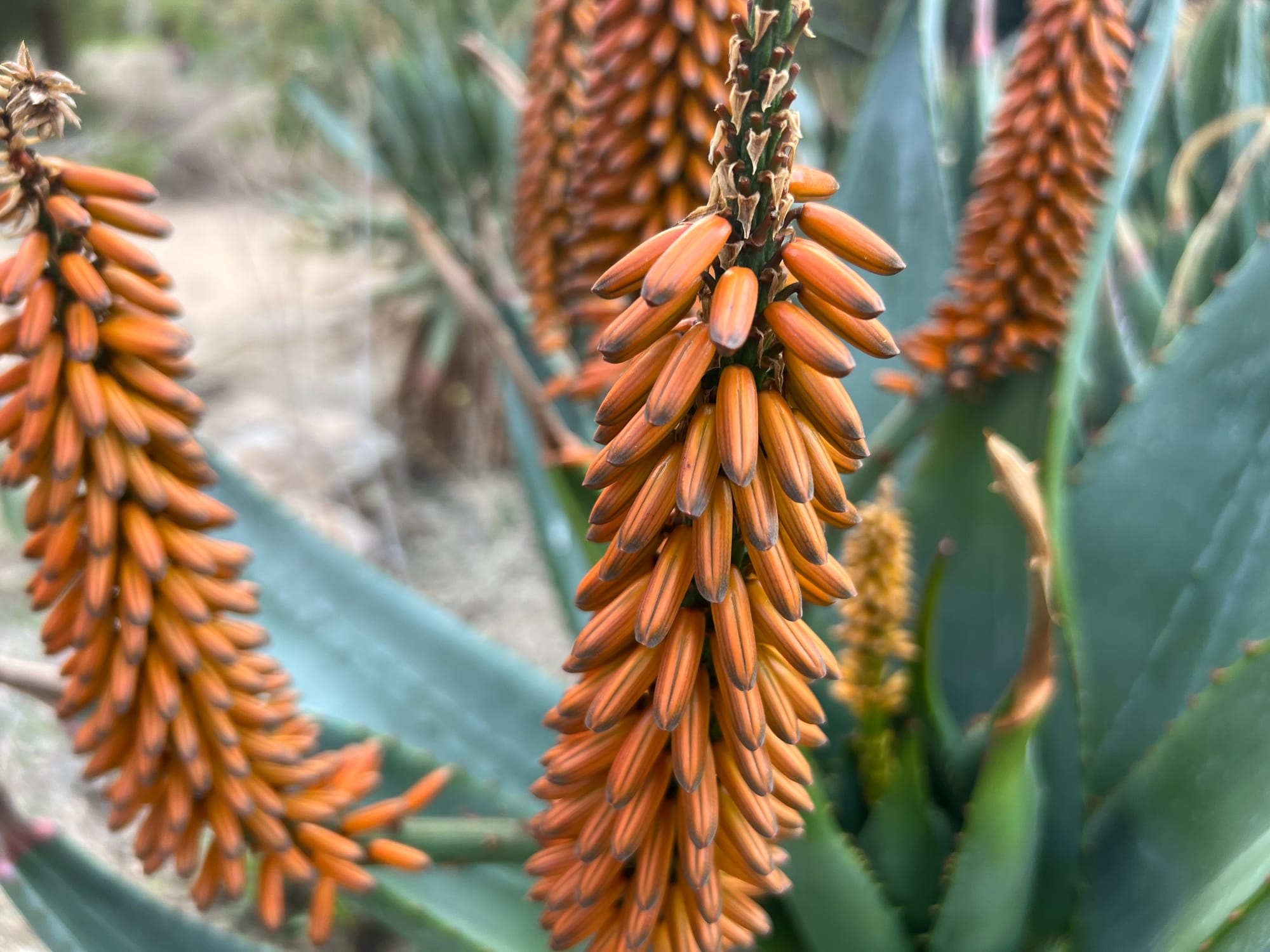
(L to R) Flat Flowered Aloe (Aloe marlothii) - Cape Aloe (Aloe ferox)
Yucca
Here are a couple of the Yuccas we came across: Mountain Yucca and Soap Tree Yucca, with a nice bluish leaf.
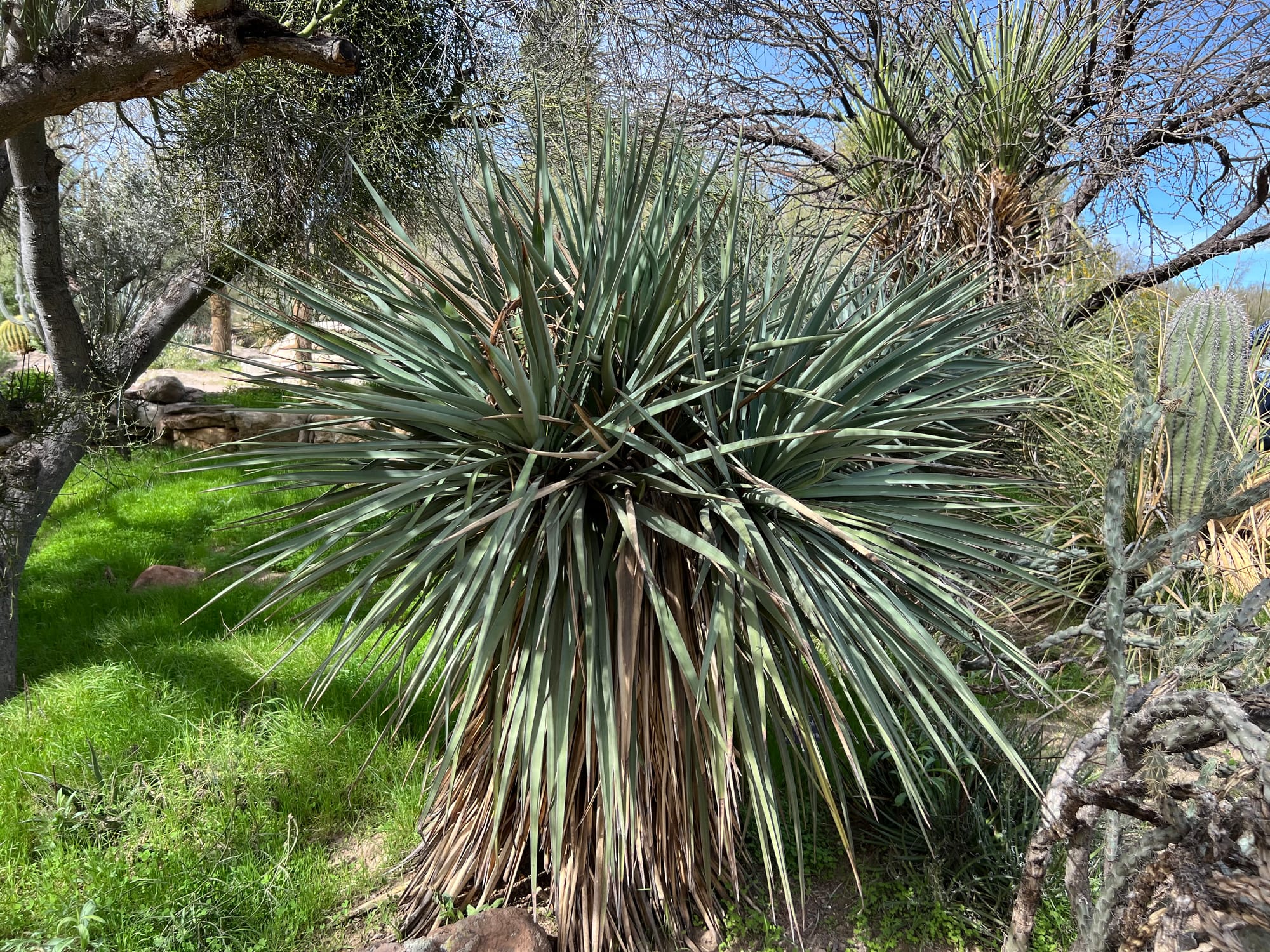
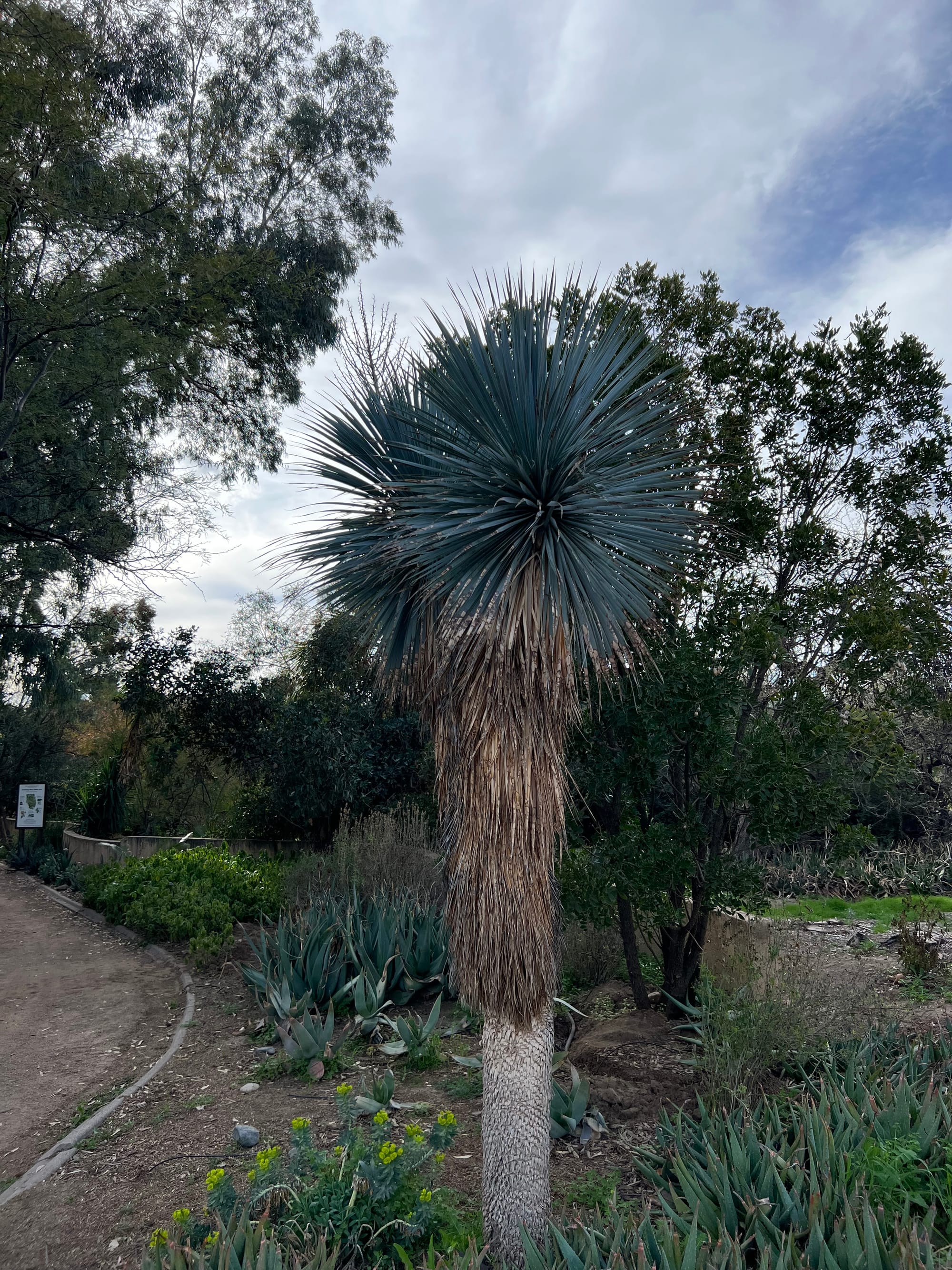
(L to R) Mountain Yucca (Yucca madrensis) - Soaptree Yucca (Yucca elata)
For comparison, here's the yucca that grows in my northern Great Plains prairie area. It's much smaller but also very drought-tolerant.
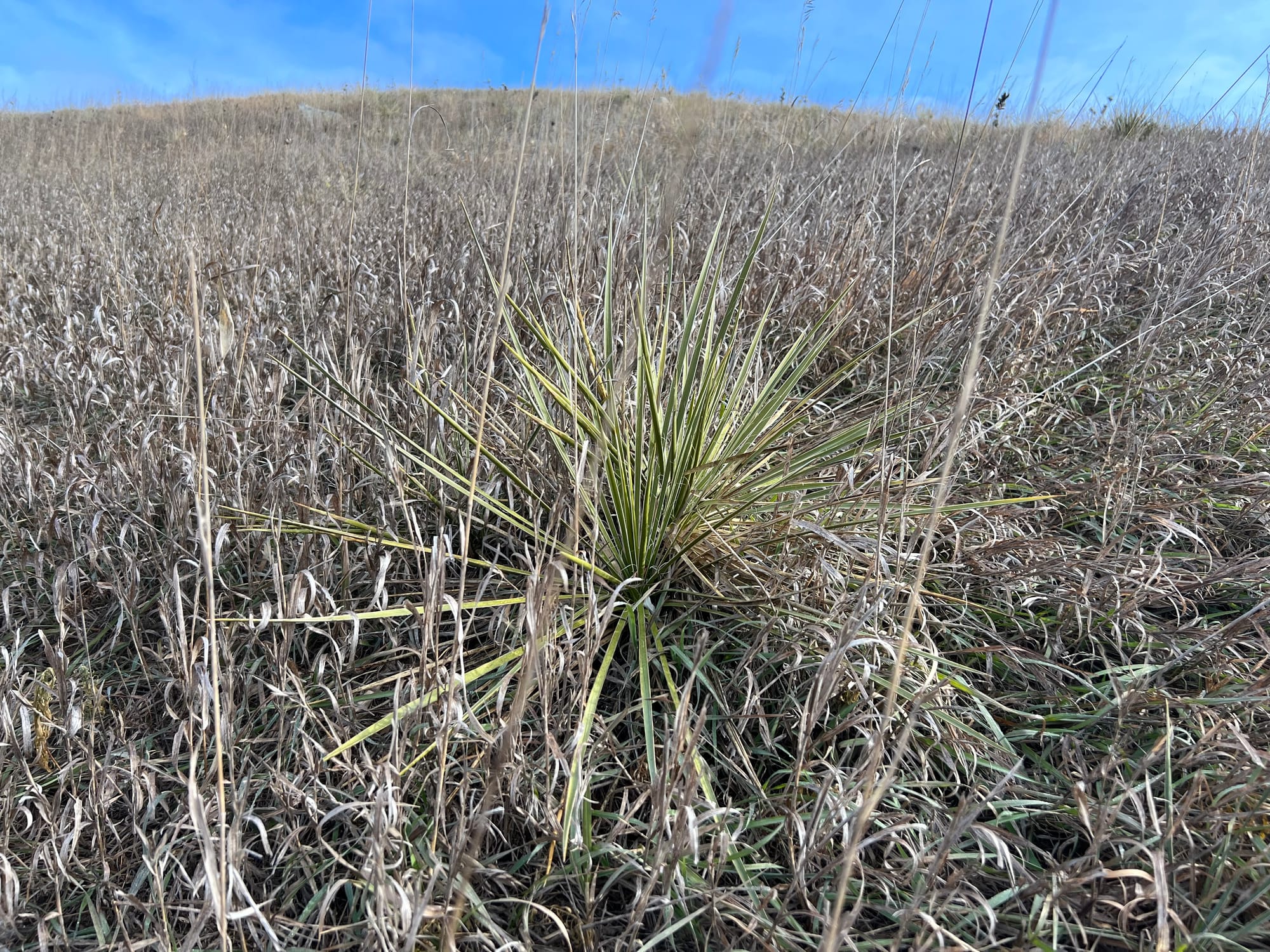
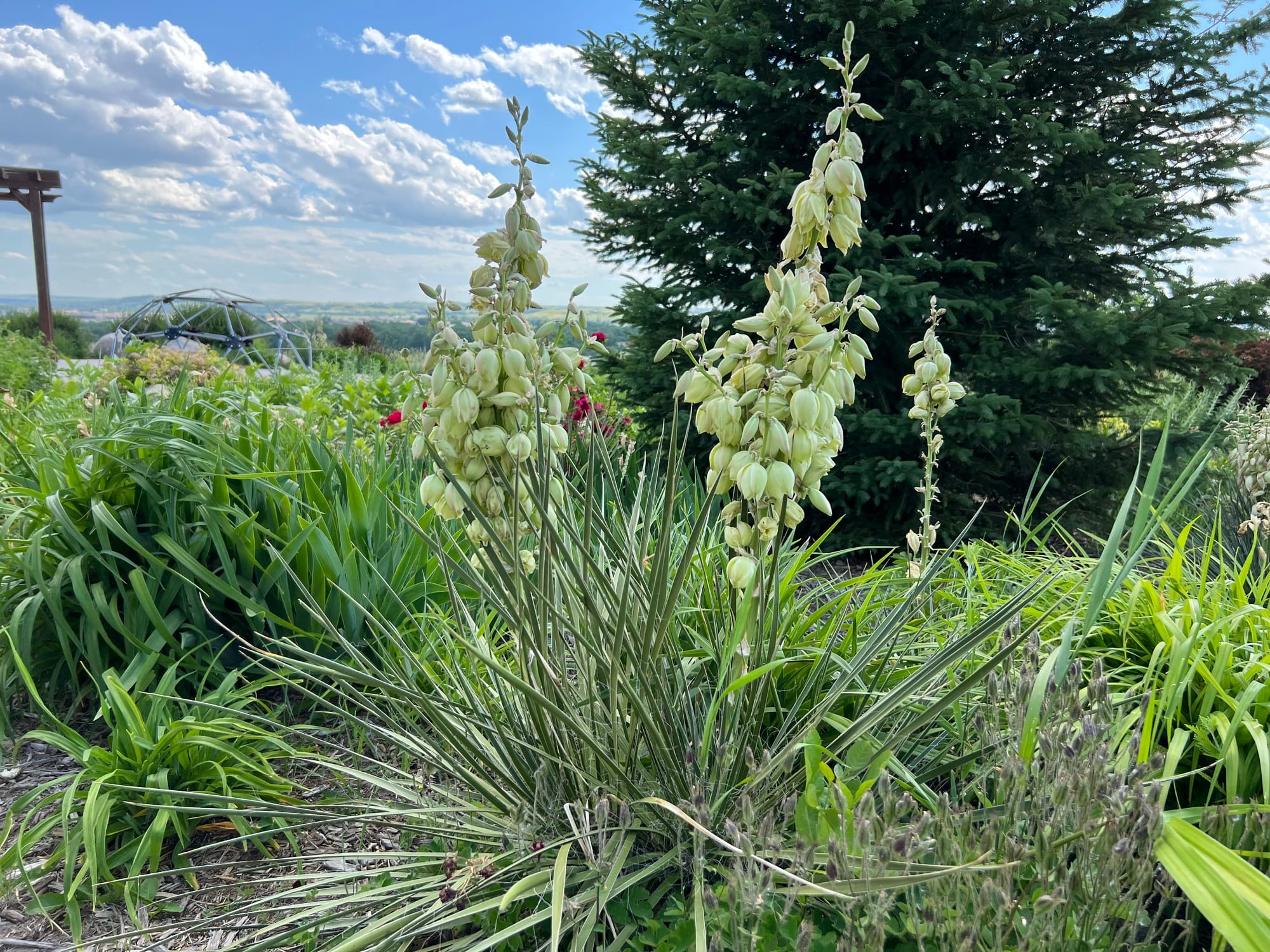
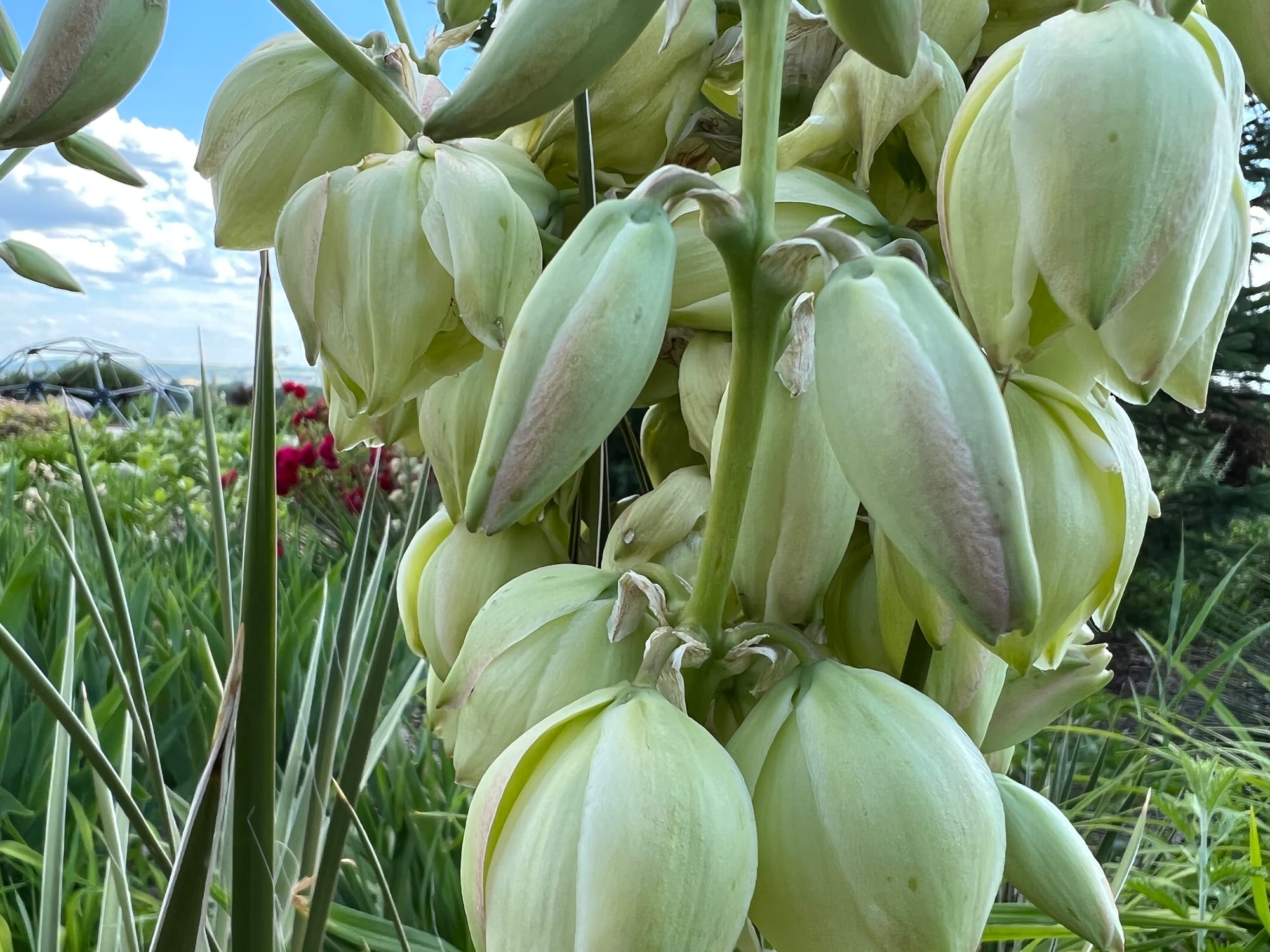
Soapweed (Yucca glauca) - Northern Plains
Prickly Pears
Here's a group of cacti that stand out as icons of the desert, and there are hundreds of varieties. They get their name from the flavorful fruits and showy flowers. Most prickly pears are in shrub form, but some can get quite tall and are small trees. I had some trouble at first identifying them due to the various common names like Indian Fig. That's the importance of the Latin Scientific names. Common names can vary from region to region, but scientific names are used worldwide and help us to know which plants we are talking about. In this case, the Opuntia genus.
The white spines on Prickly Pear can be up to 3" long, flat, curved, straight, or nearly absent. They also are covered with tiny, barbed hairs known as glochids.
From L to R:
- Texas Prickly Pear, Opuntia engelmannii var. lindheimeri
- Chaparral Prickly Pear, Opuntia oricola
- Santa Rita Prickly Pear, Opuntia santa-rita
- Cardon or Giant Prickly Pear, Opuntia streptacantha
- Indian Fig, Opuntia ficus-indica
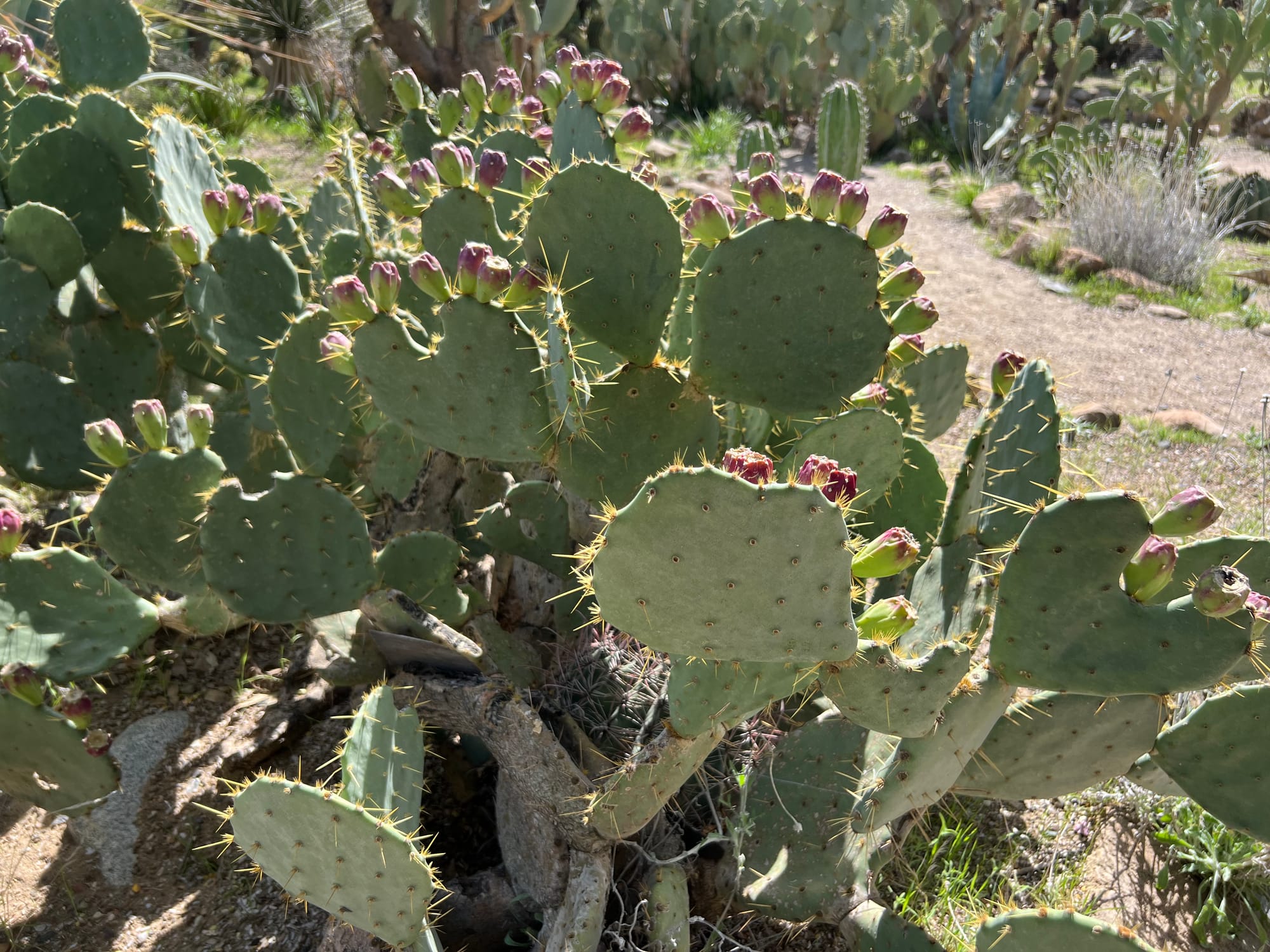
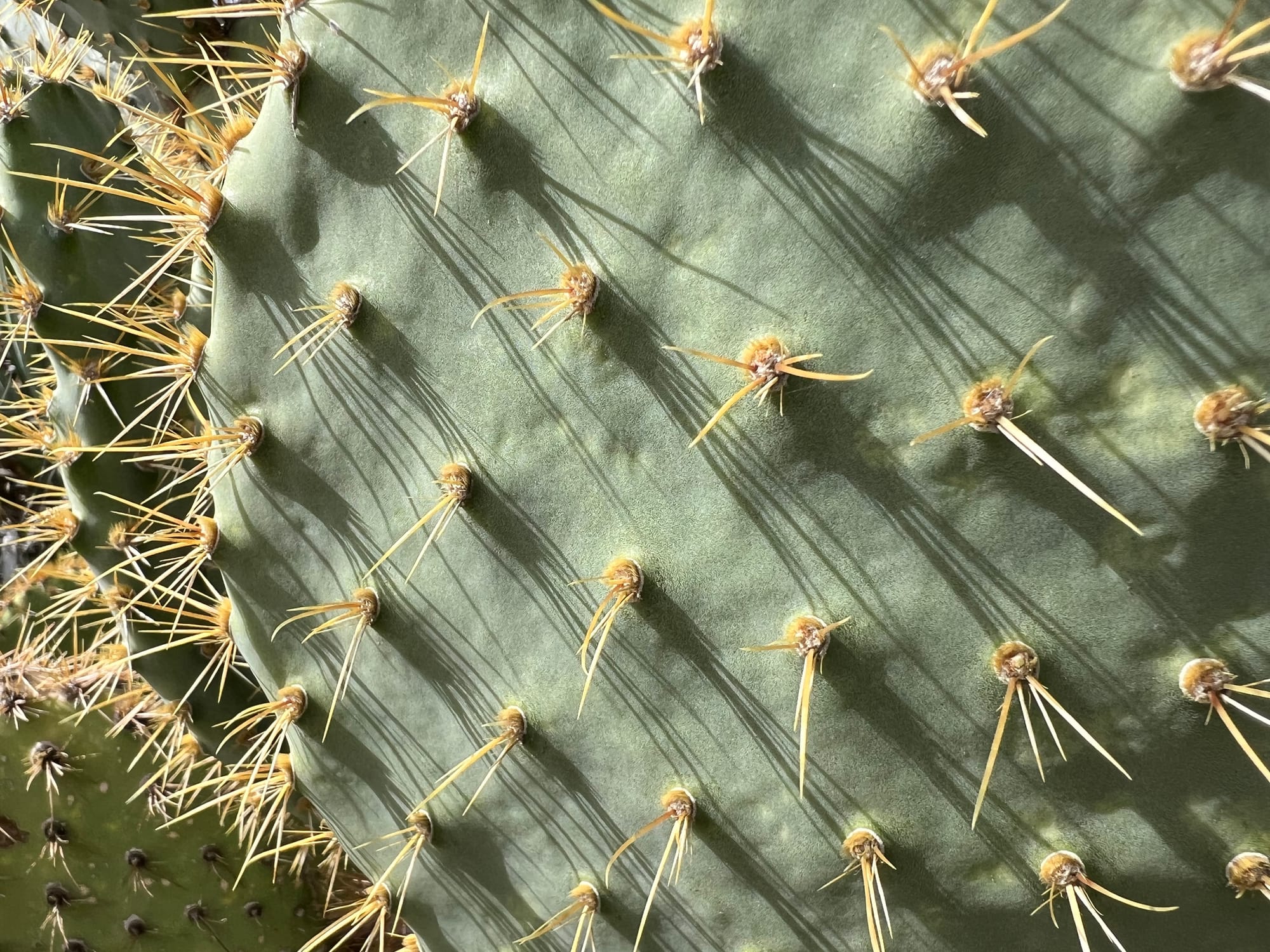
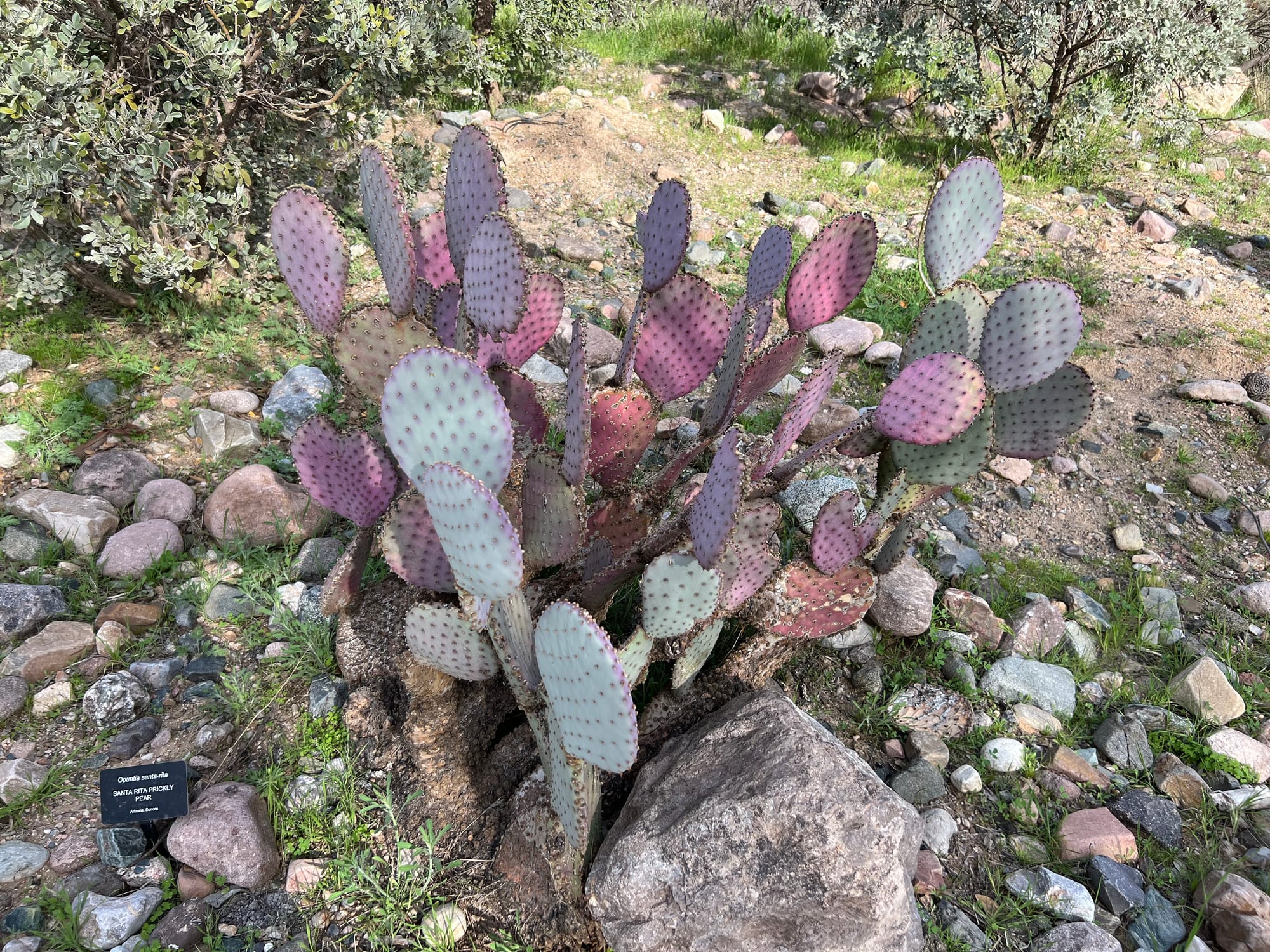
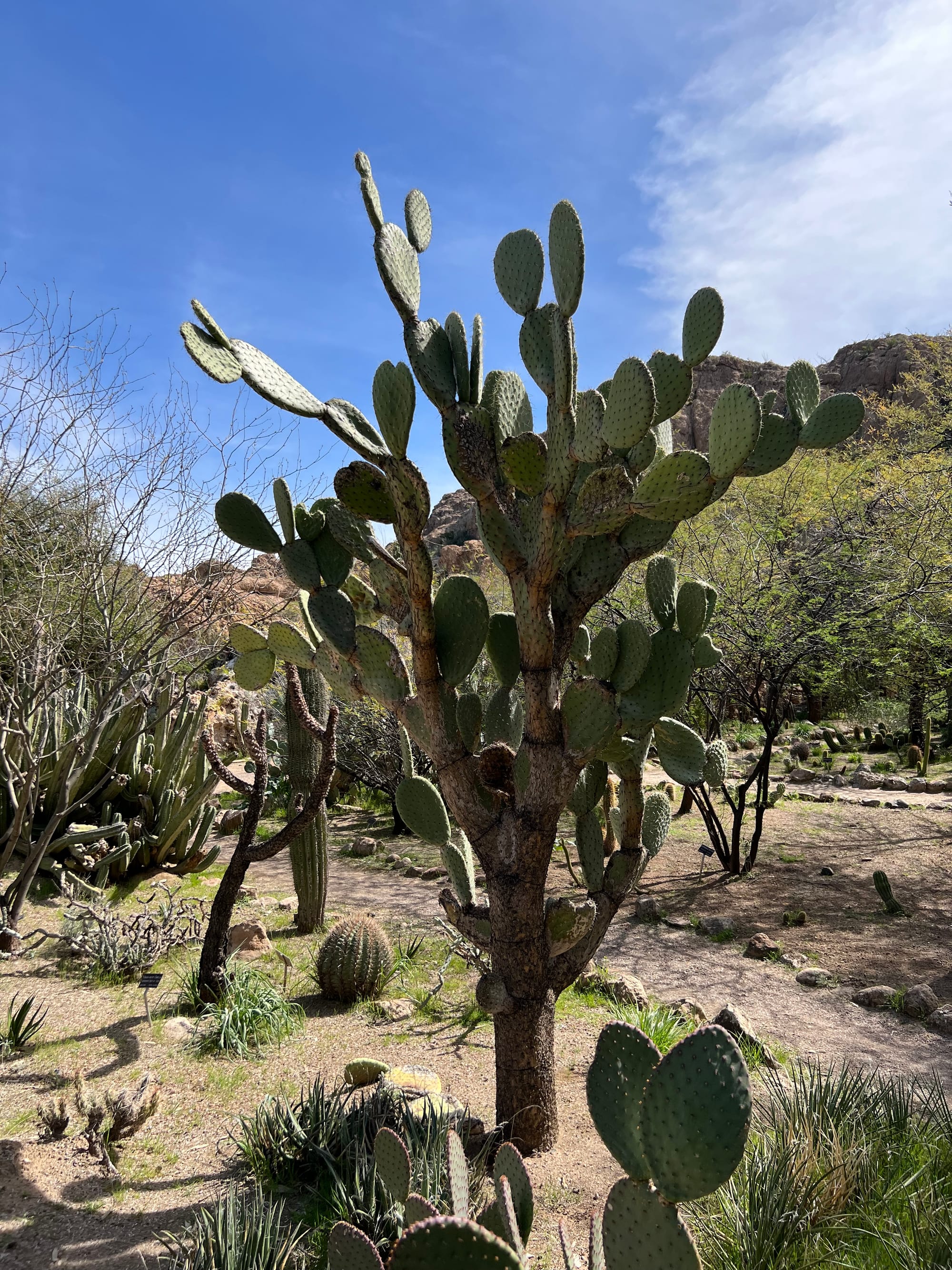
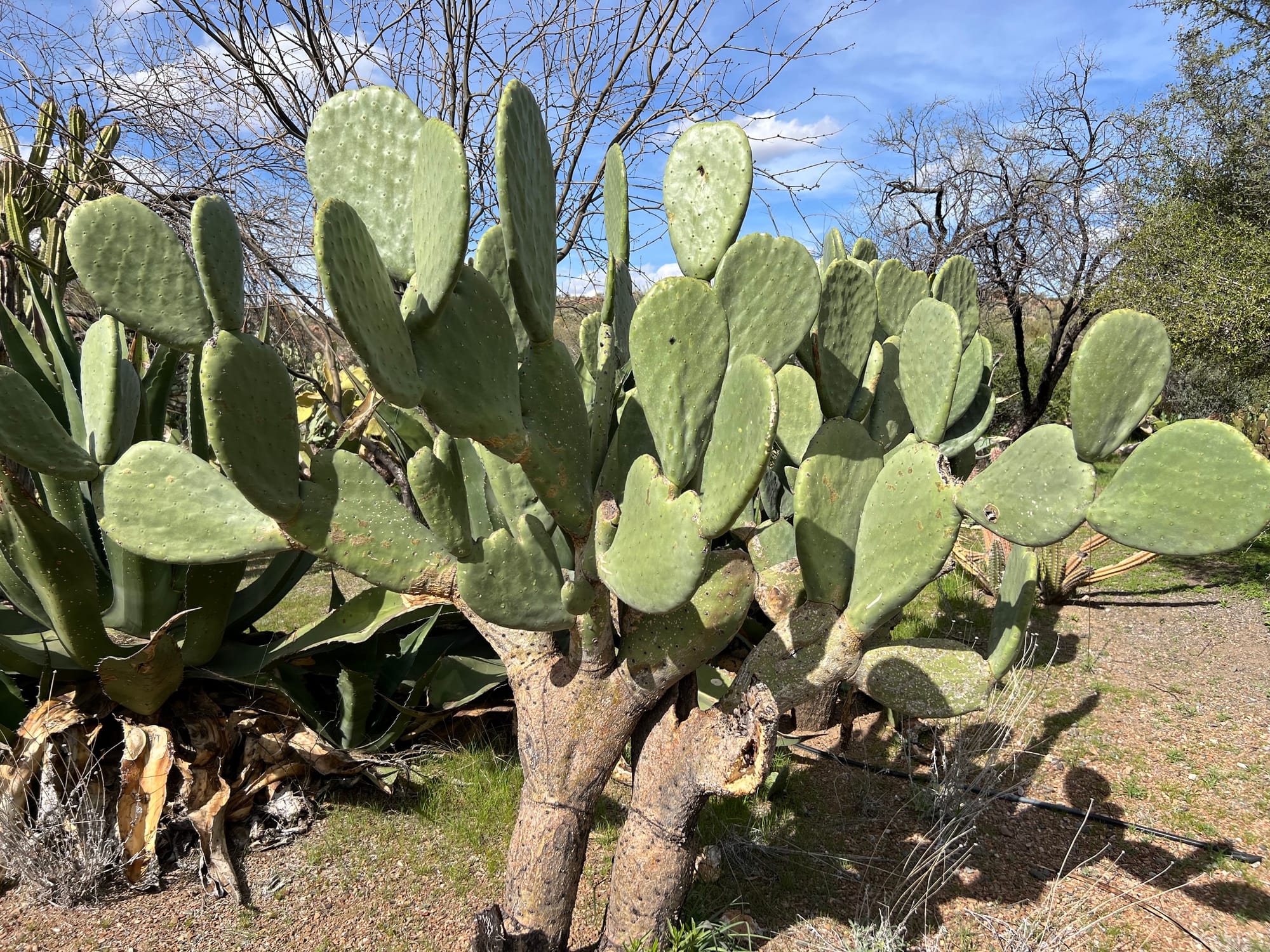
(L to R) Prickly Pears: Texas - Chaparral - Santa Rita - Cardon - Indian Fig
Deciduous Trees
It took me a bit by surprise how many large deciduous trees were growing in this area. I guess I was expecting to see pretty much all Cacti and succulents. I've included a few favorite we discovered.
Mesquite
About 40 species of this tree live worldwide, and around three grow in Arizona. I love this tree's bark and character. I found it fascinating how extensive the root system can be; laterally, over 100 feet wide and over 100 feet deep. I even read estimates of a root depth of over 200 feet!
Eucalyptus Trees:
I had no idea there were so many Eucalyptus trees. The Eucalyptus genus is a large one, with over 600 species. It's in the Myrtle family of plants (Myrtacea) and native to Australia and Tasmania. Eucalyptus trees are a valuable genus with many uses: medicinal, fuel, buildings, and more.
Red Malle has an exfoliating bark and is a nice-looking tree. This tree reminded me of the Weeping Willows that grow in our area, especially the Prairie Cascade variety. Unfortunately, I don't have a photo to share for comparison.
Die Hardy Mallee mainly grows in a localized range of Western Australia called the Die Hardy Range. The name speaks volumes about how rough that environment must be. And again here, a dramatic exfoliating bark. I love this look. I'm fascinated by the different tree barks, so it was a treat to see the variations in the Eucalyptus genus.
Gimlet Gum has a very cool tree trunk!
And one of the larger Eucalyptus, Mugga Ironbark. I can see where it gets its name; the bark resembles Iron. It's just a massive tree.
The Red River Gum Eucalyptus is another tree with some fantastic color variations in the tree trunk, and again, it is just a massive tree. This one reminded me of the size of the Cottonwoods in our area.
From L to R:
- Velvet Mesquite, Prosopis velutina
- Red Mallee, Eucalyptus oleosa
- Die Hardy Mallee, Eucalyptus formanii
- Gimlet Gum, Eucalyptus salubris
- Mugga Ironbark, Eucalyptus sideroxylon subsp.sideroxylon
- Red River Gum, *Eucalyptus, Eucalyptus camaldulensis
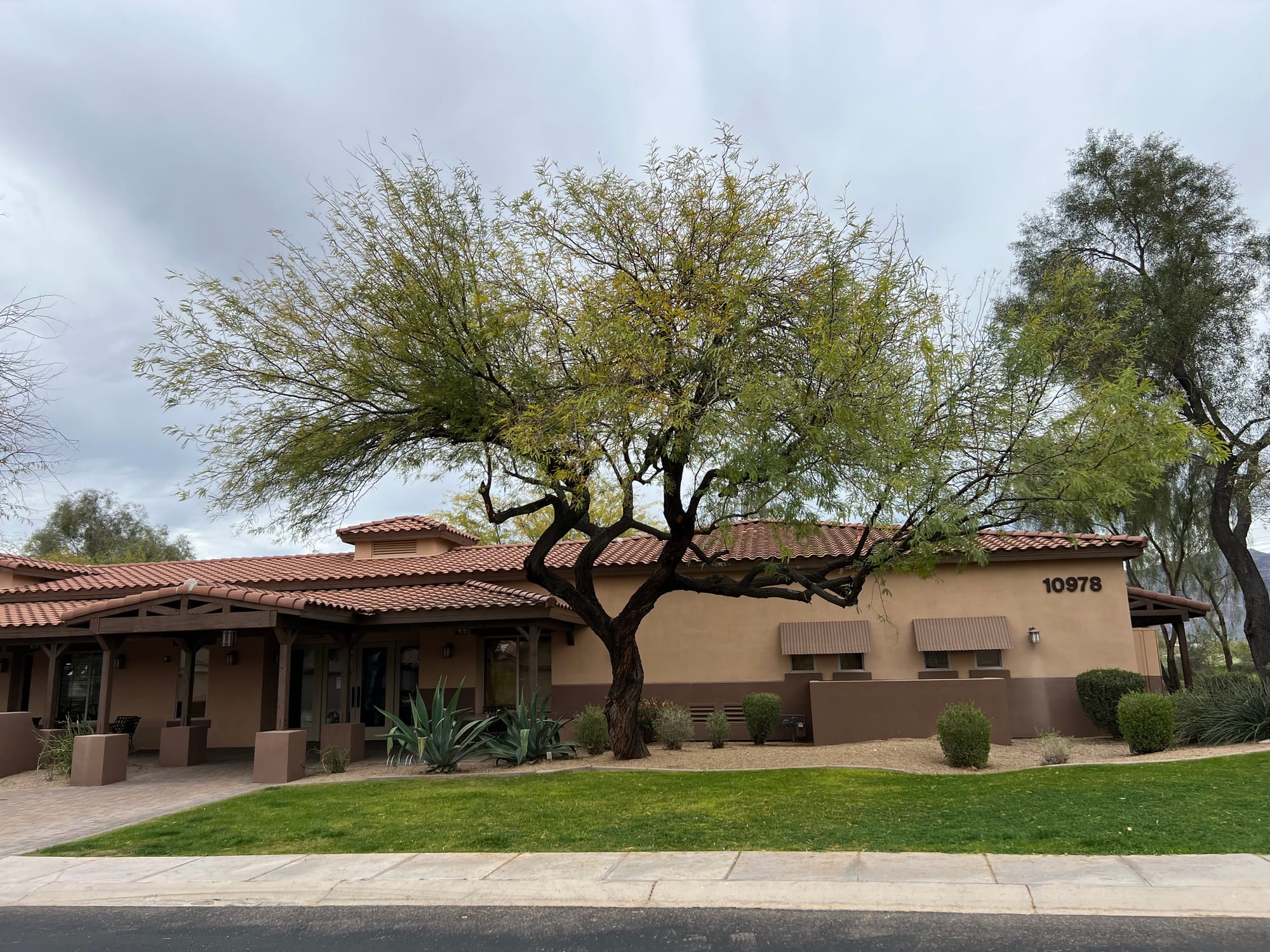
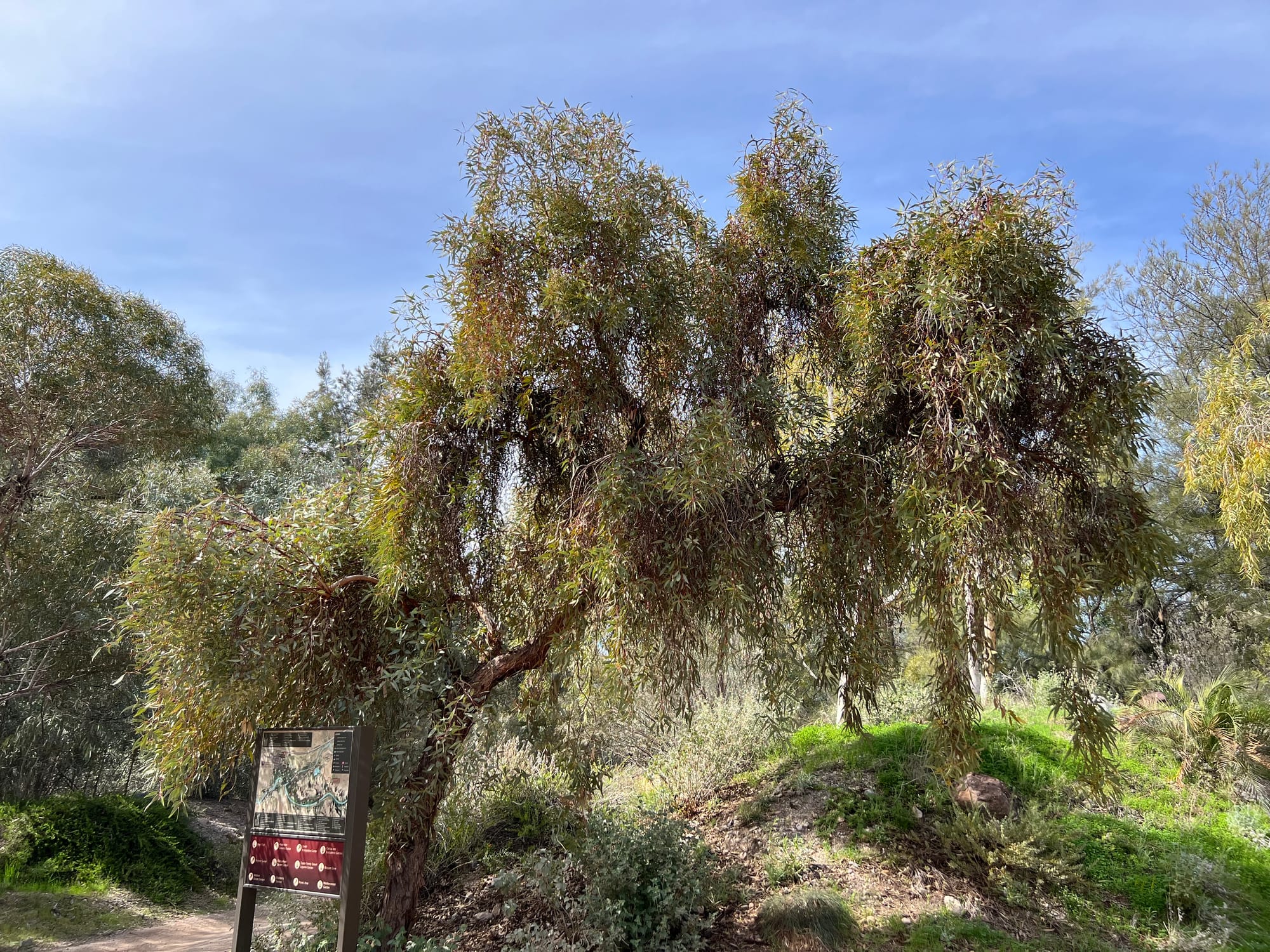
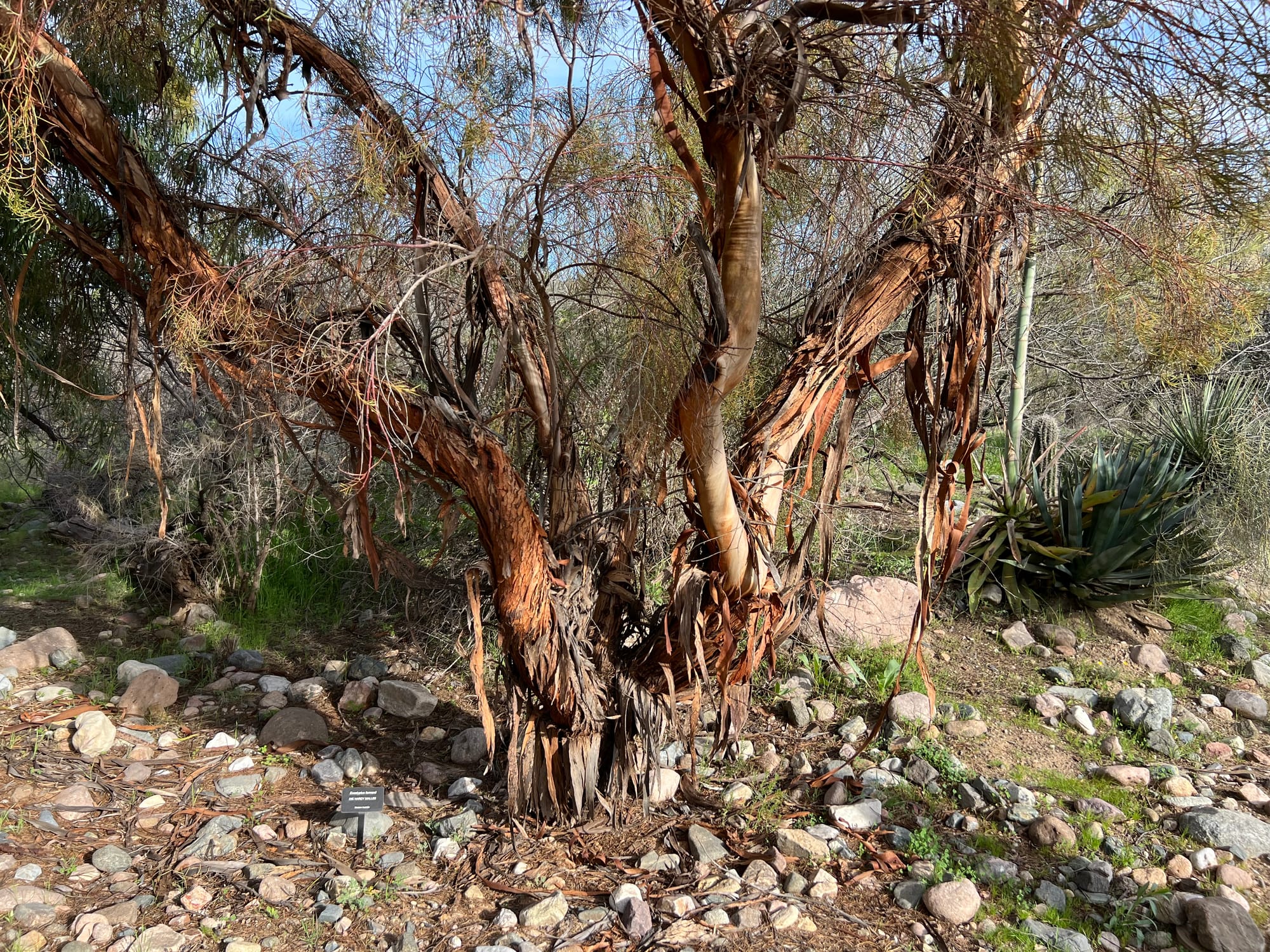
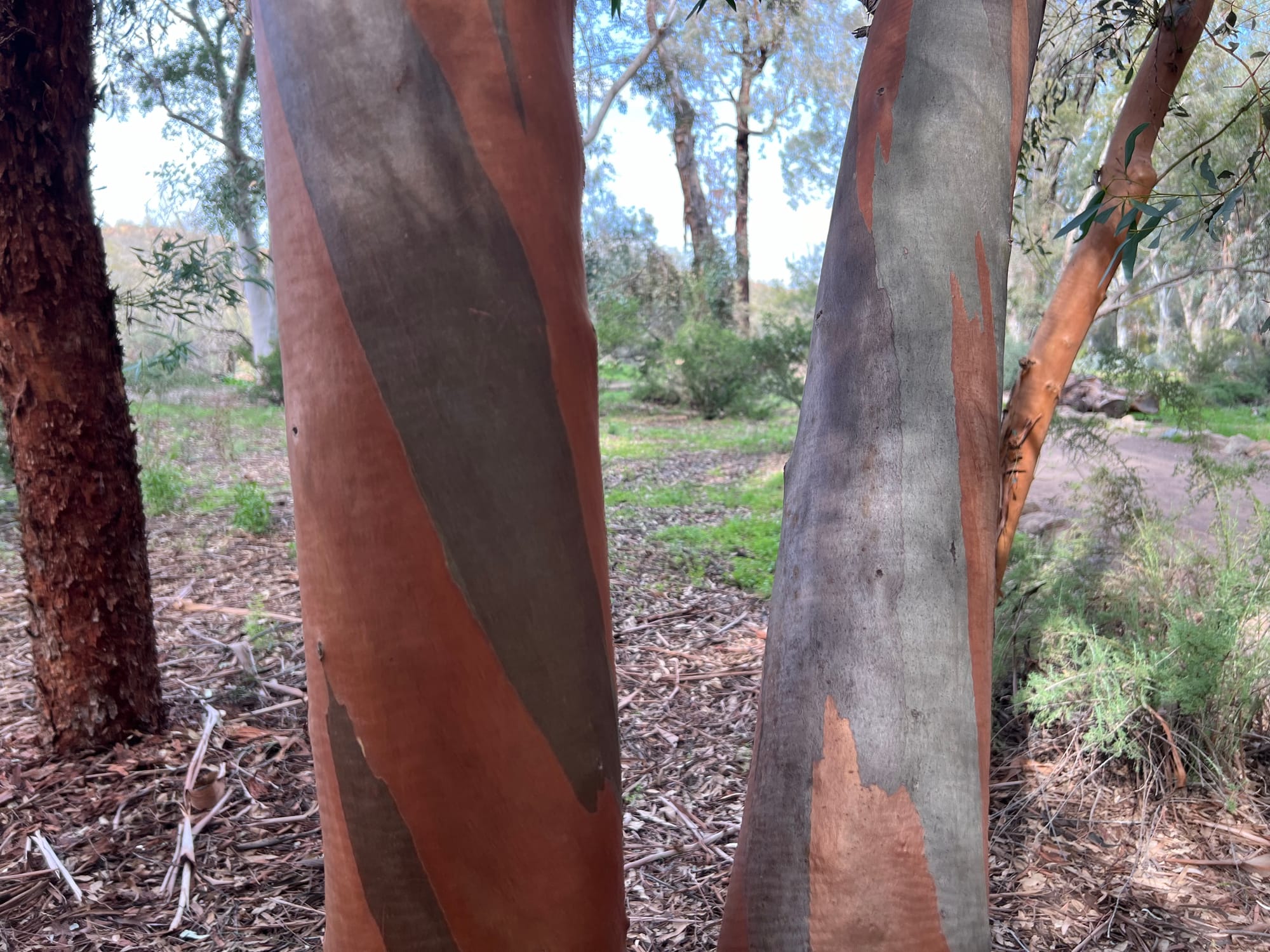
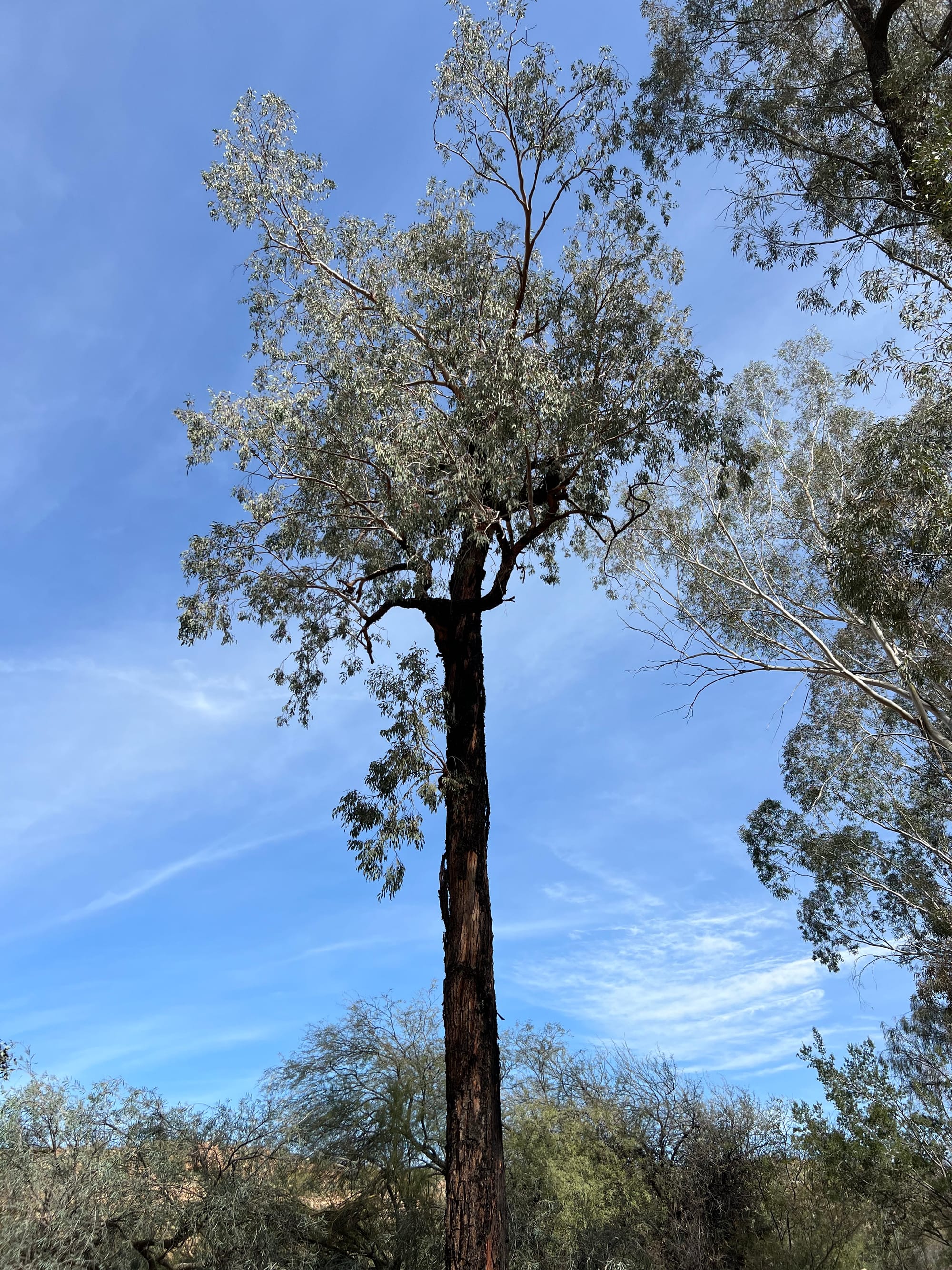

(L to R) Velvet Mesquite - Red Malle - Die Hardy Malle - Gimlet Gum - Mugga Ironbark - Red River Gum
Garden Hike is supported by its audience. When you purchase through links on this site, we may earn a small commission at no additional charge to you. Thank you. Click A.M.Leonard’s banner below to check out their great selection of tools and supplies.

The Saguaro is the defining cactus of the Sonoran Desert; Carnegiea gigantea is considered the true Sagauro and grows in a limited area of the Sonoran Desert in Arizona and Mexico. They are slow-growing and can live between 150 and 200 years. It can take 50-70 years before they grow arms. Some larger, older, 40-60 foot saguaros can weigh over 4000 pounds when fully hydrated.
In contrast to the Mesquite tree, the Saguaro roots are only about 4-6" deep but extend out laterally as tall as the plant.
The Argentine Saguaro, also called the Argentine Cardon, has longer and brighter spines than the Sonoran Saguaro. The Argentine also has lower arms and grows much faster than the Sonoran.
And a similar one, maybe Organ Pipe Cactus, no label on this one, though, so I can't say for sure, but I like the look of it with the lower multi-stemmed habit.
Senita, another shorter, multi-stemmed variety.
Totem Pole is a smooth-skinned cactus with smooth skin and no visible spines, and this is a night bloomer where light pink blossoms open up at dusk and close by mid-morning.
L to R:
- Saguaro, Carnegiea gigantea
- Argentine Cardon, Trichocereus terscheckii
- Organ Pipe Cactus, Stenocereus thurberi
- Senita, Lophocereus schottii
- Totem Pole, Lophocereus schottii f. monstrosus
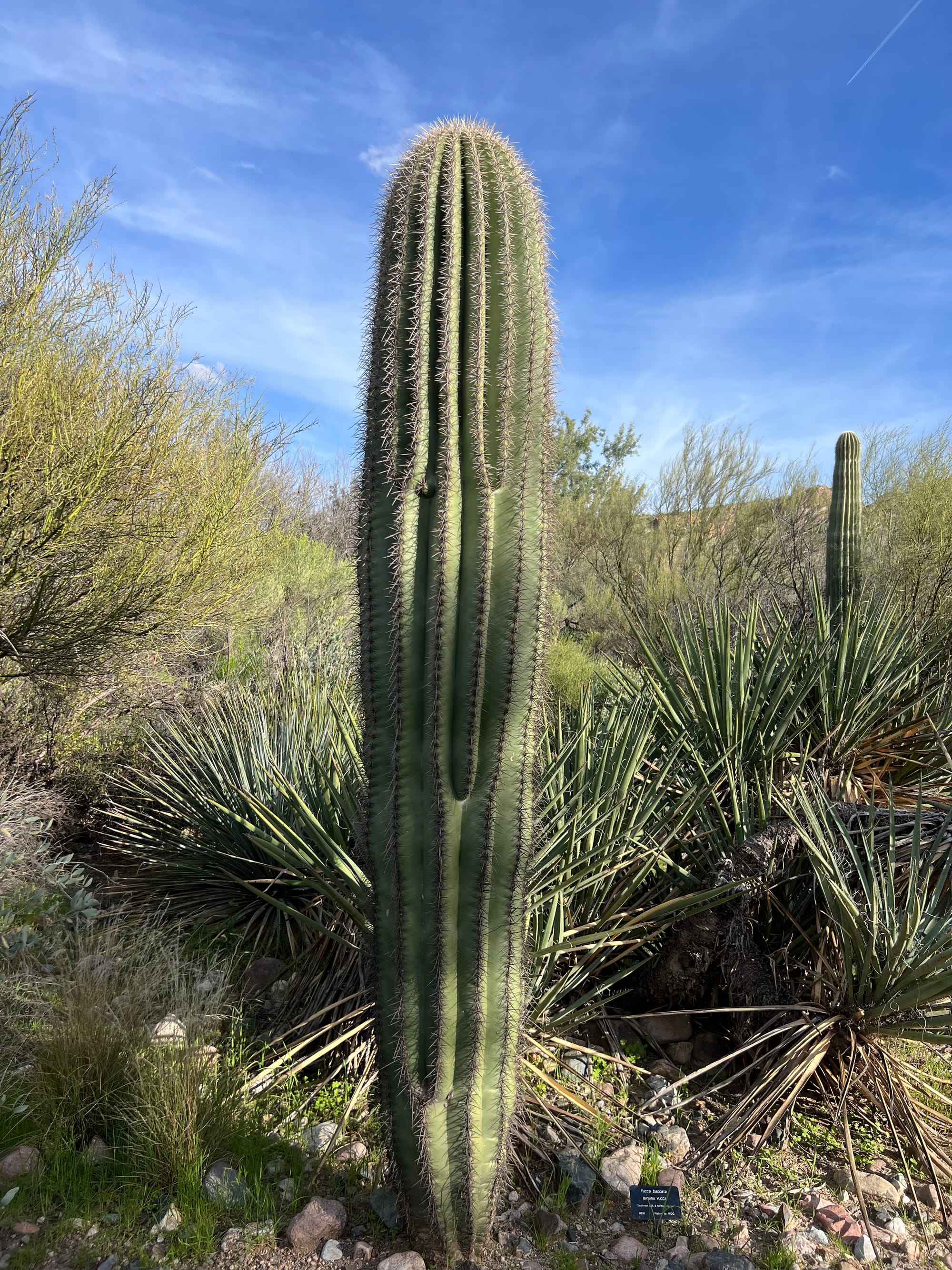
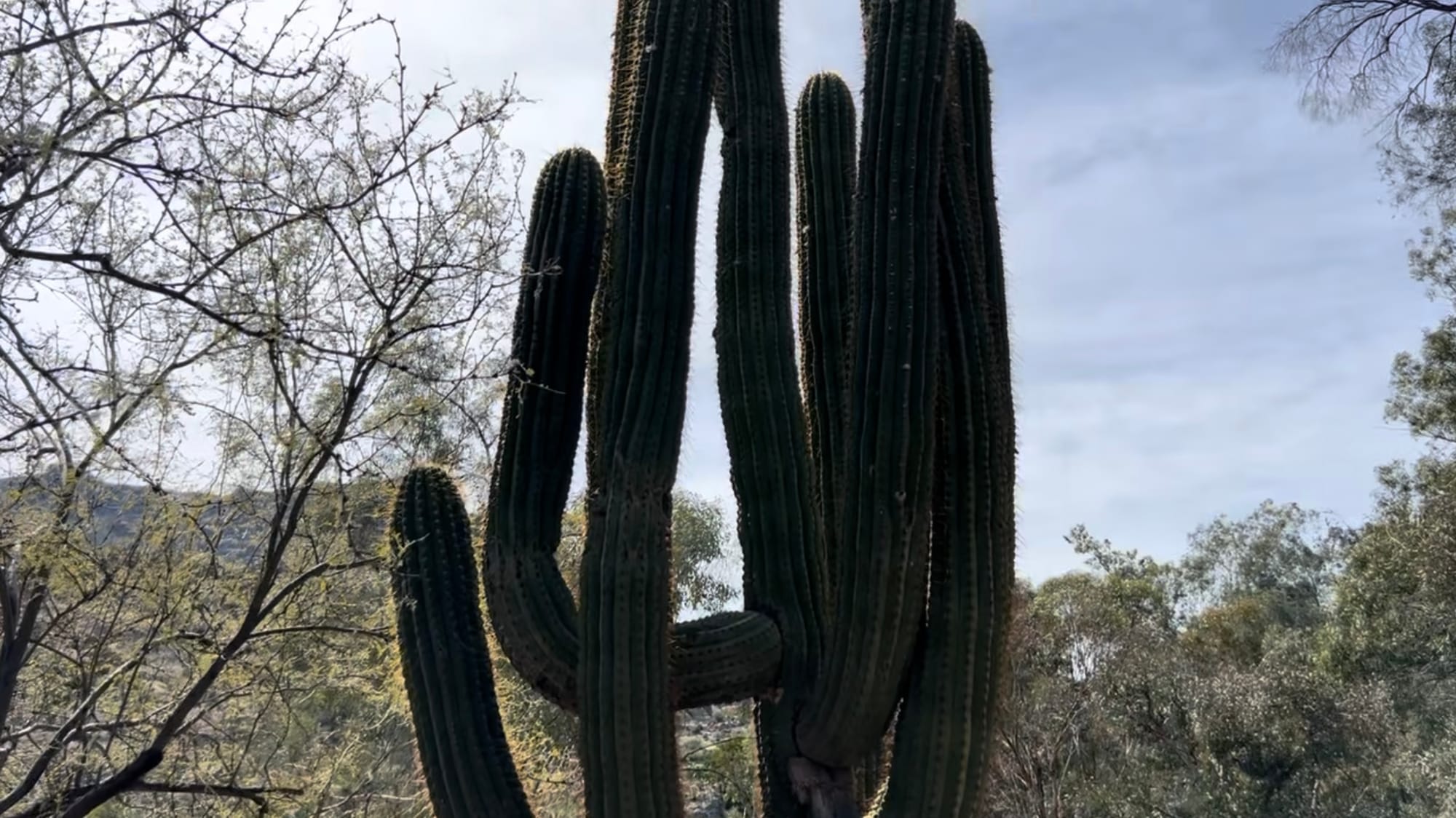
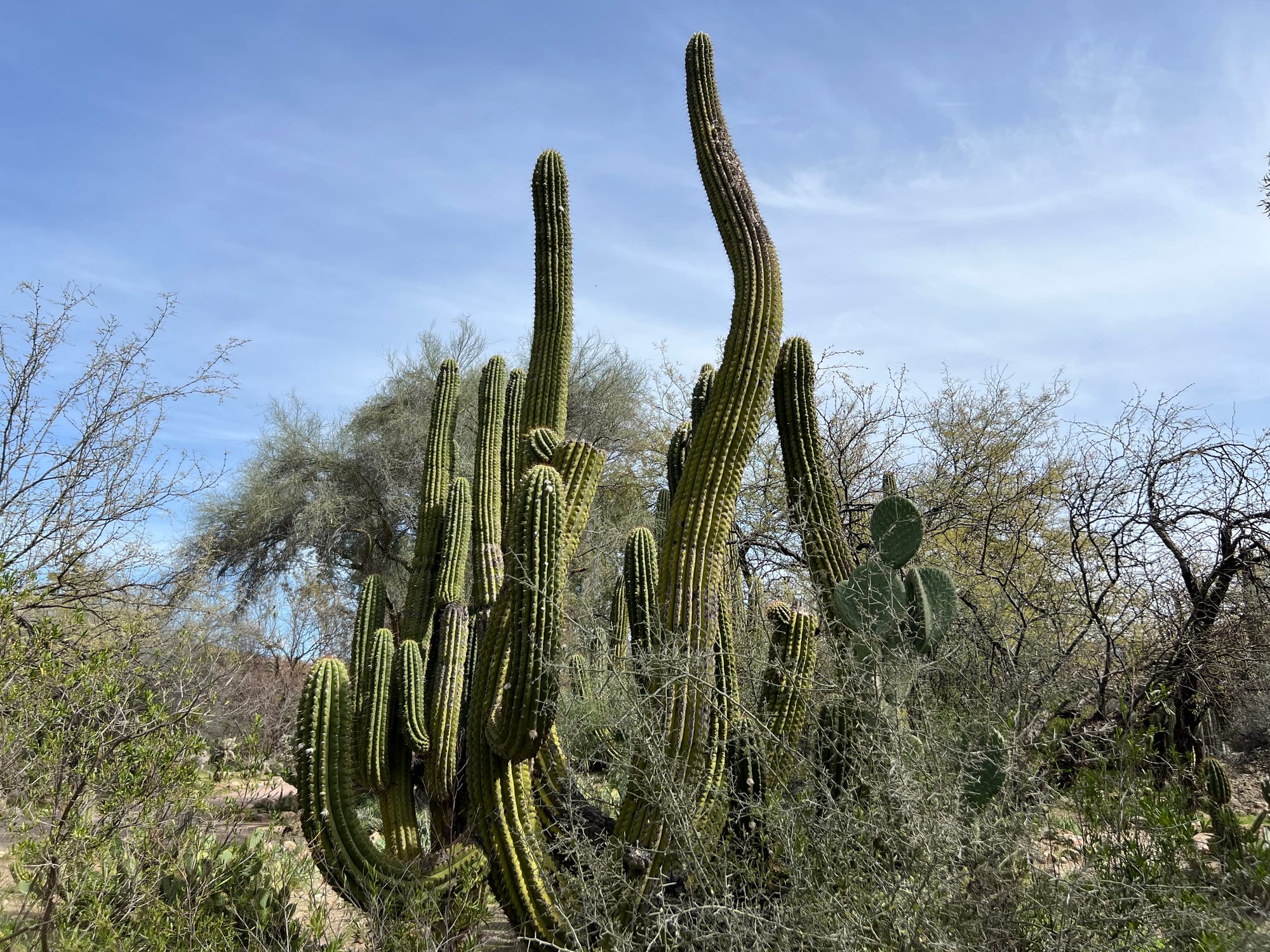
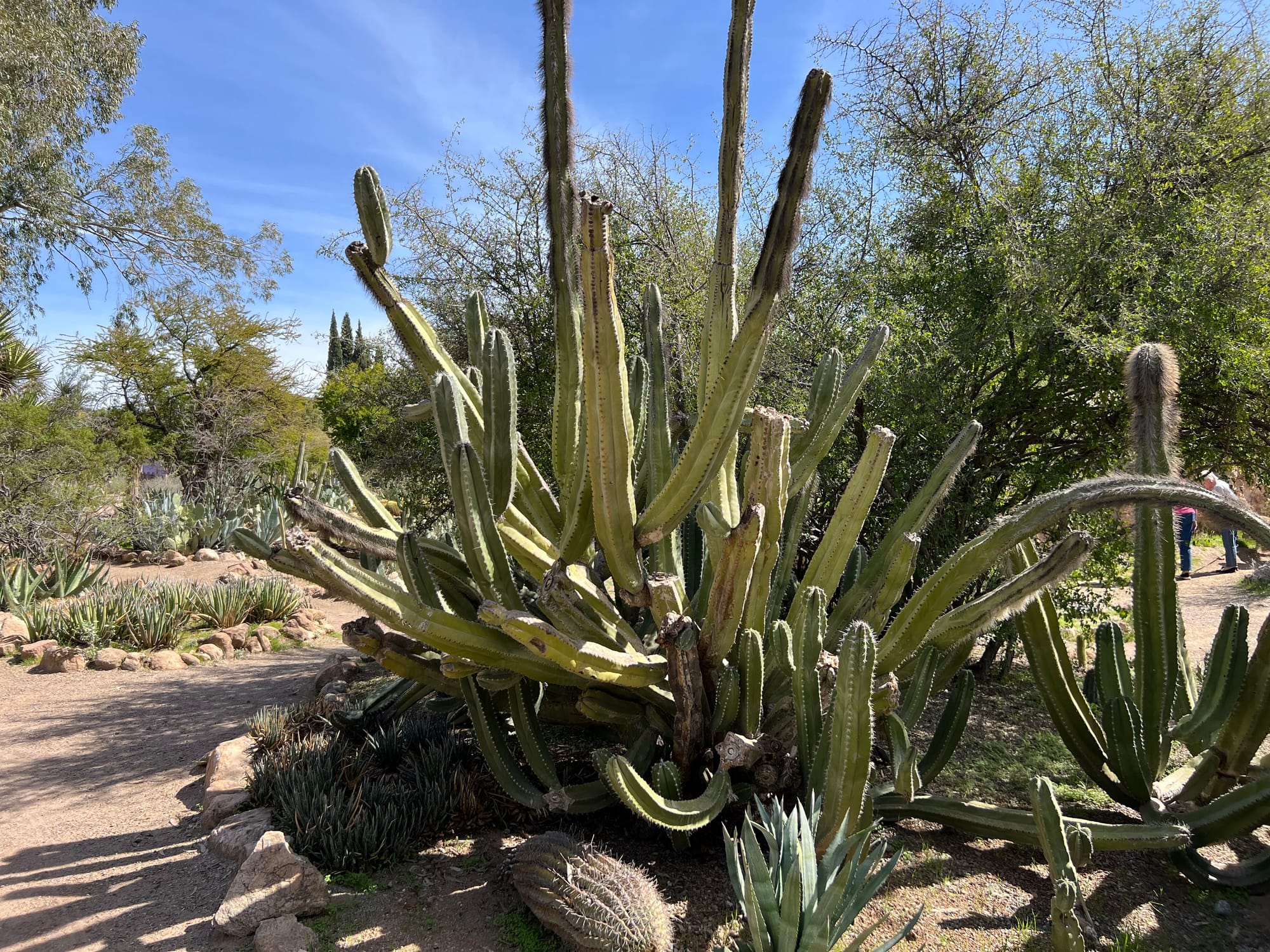
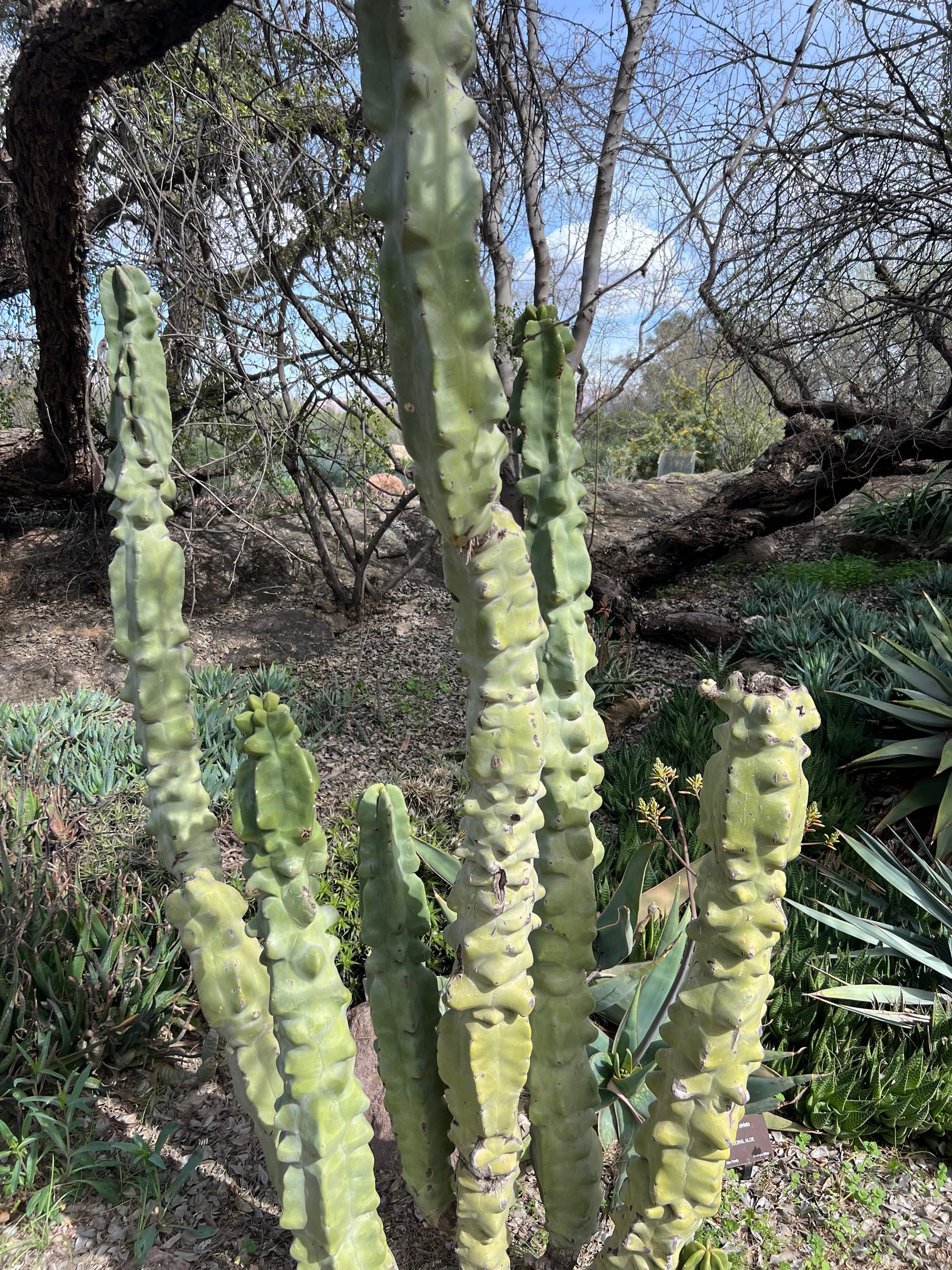
(L to R) Saguaro - Argentine Cardon - Organ Pipe - Senita - Totem Pole
And the Chollas. I love the look of the Jumping or Chainfruit Chollas. I suspect it gets its name, meaning if you brush close to this cactus, one of those bundles of thorns will almost jump onto you. This is one of the ways they reproduce, by hitching a ride to a new location. The sharp spines help them to detach from the mother plant easily.
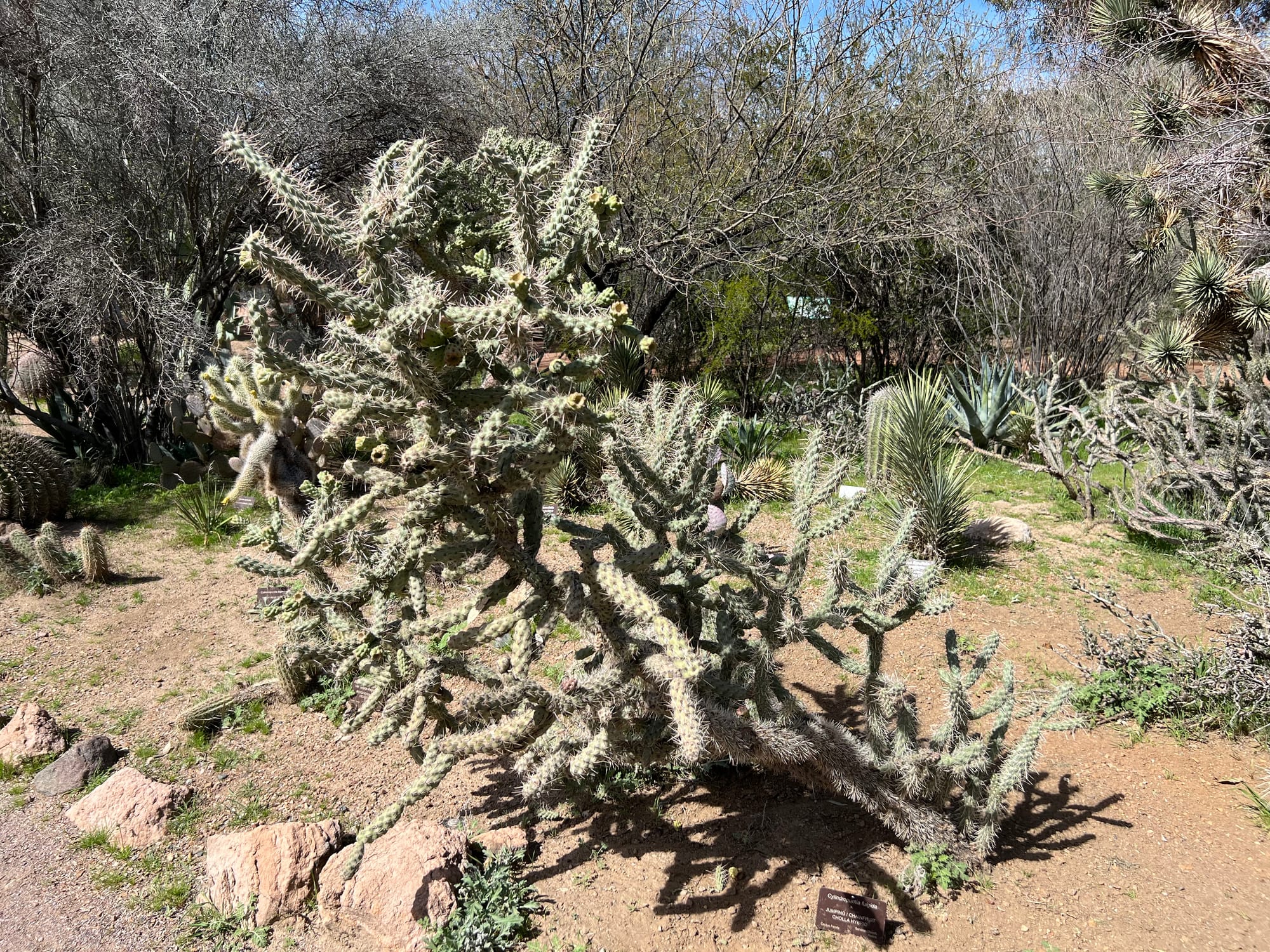
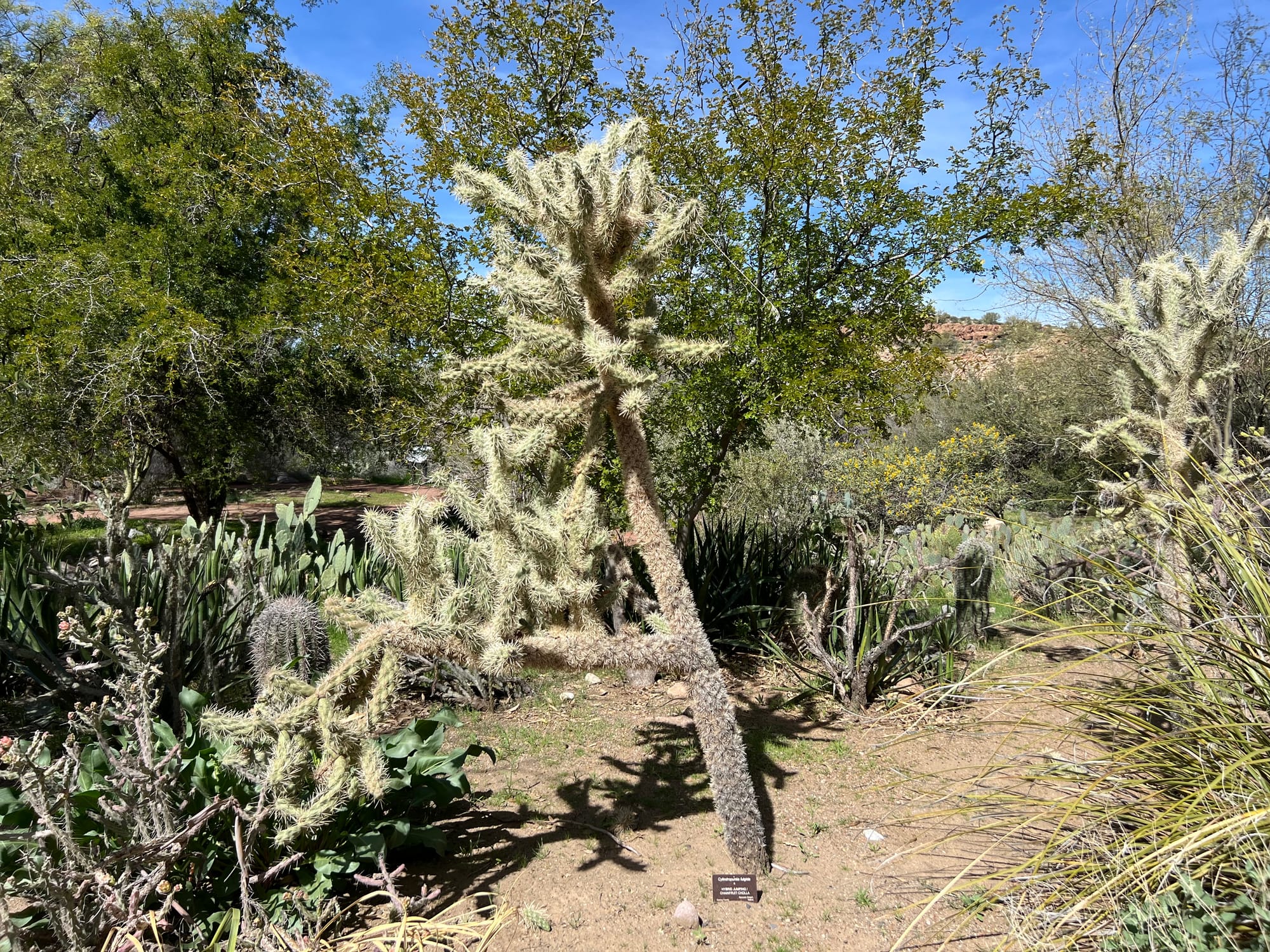

Hybrid Jumping / Chainfruit Cholla Cylindropuntia fulgida
I love tall columnar plants! Native to the Mediterranean areas, the Italian Cypress will grow just fine in hot, dry places like Arizona.
And who doesn't love a palm tree? Even though most palm trees prefer low-level areas along shorelines or riverside flats, some varieties will do just fine on mountainous elevations and often thrive outside their native habitat.
And a smaller, more shrubby palm, The Mediterranean fan palm. What a beautiful plant.
L to R:
- Italian Cypress, Cupressus sempervirens
- Canary Island Date Palm, Phoenix canariensis
- Mediterranean Fan Palm, Chamaerops humilis
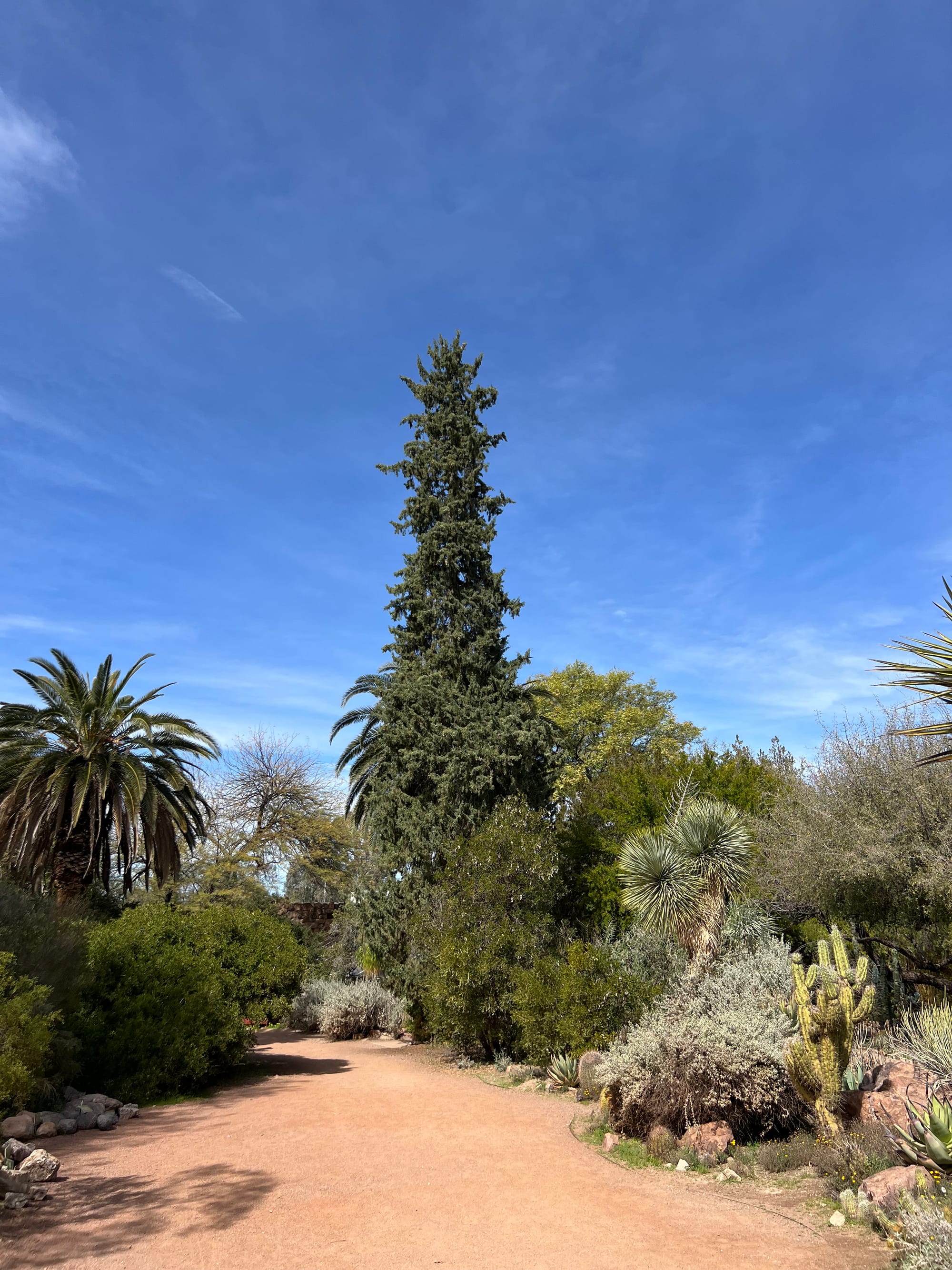
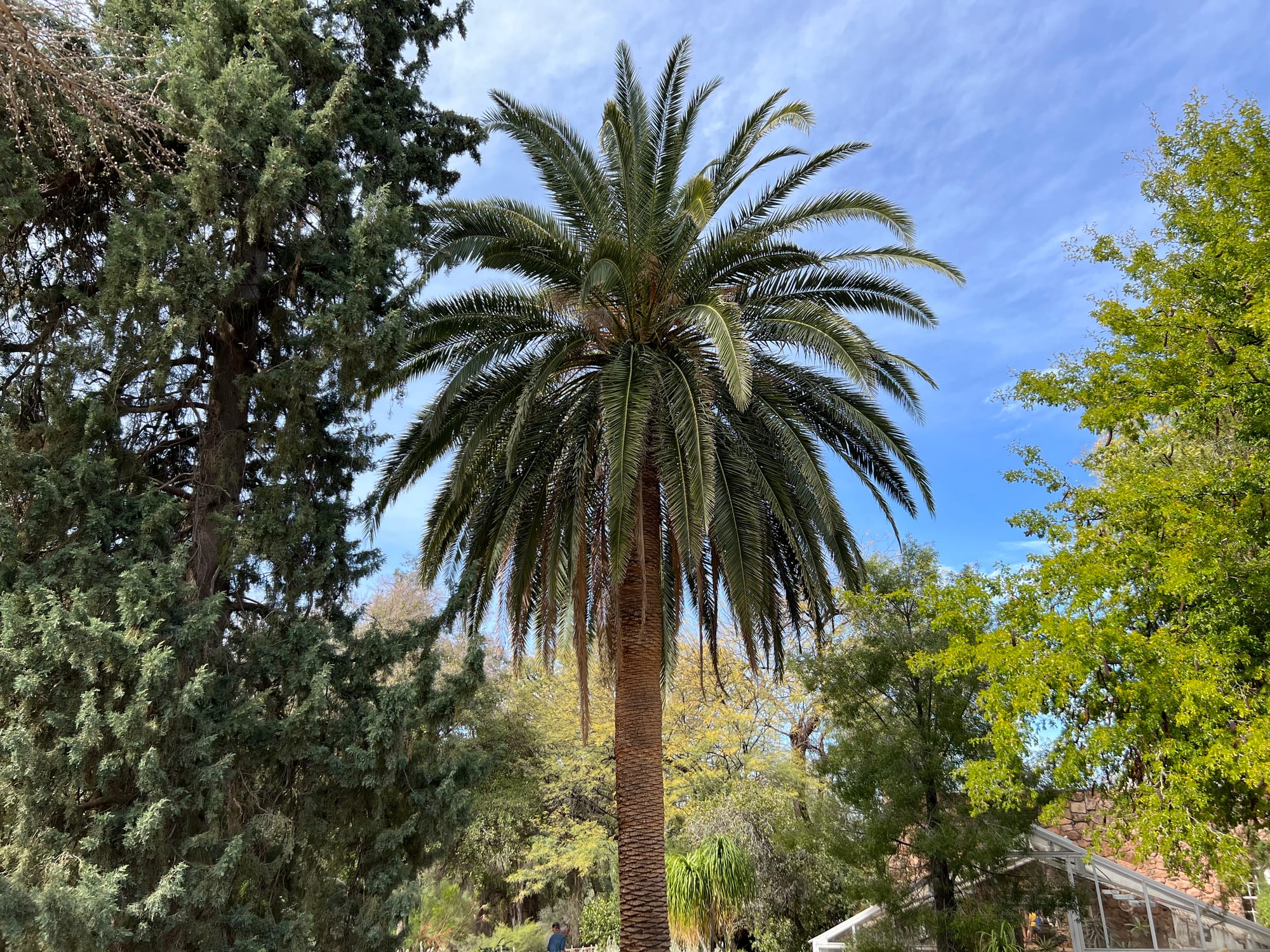

(L to R) Italian Cypress - Canary Island Date Palm - Mediterranean Fan Palm
And a few other unique plants that caught my eye - Bird's Beak Hakea (huh kay uh). That red draws your eye and attention. Hakea is another shrubby plant that reaches about 12' high and is native to Australia.
Boojum! This one has a strange appearance with some fascinating characteristics. It has a shape like an upside-down carrot, but that is where it stores its water for the long, dry periods it needs to survive. I love the contrast of white bark and small-scale-like leaves. The largest one here is over 30 feet tall.
And similar to Boojum, the Ocotillo is native to this area, a spiny shrub with long whip-like green stems. We're going to miss this in flower, too. They have orange-red flowers in clusters at the tip of each branch.
L to R:
- Bird’s Beak Hakea, Hakea orthorrhyncha var. filiformis
- Boojum, Fouquieria columnaris
- Ocotillo, Fouquieria splendens
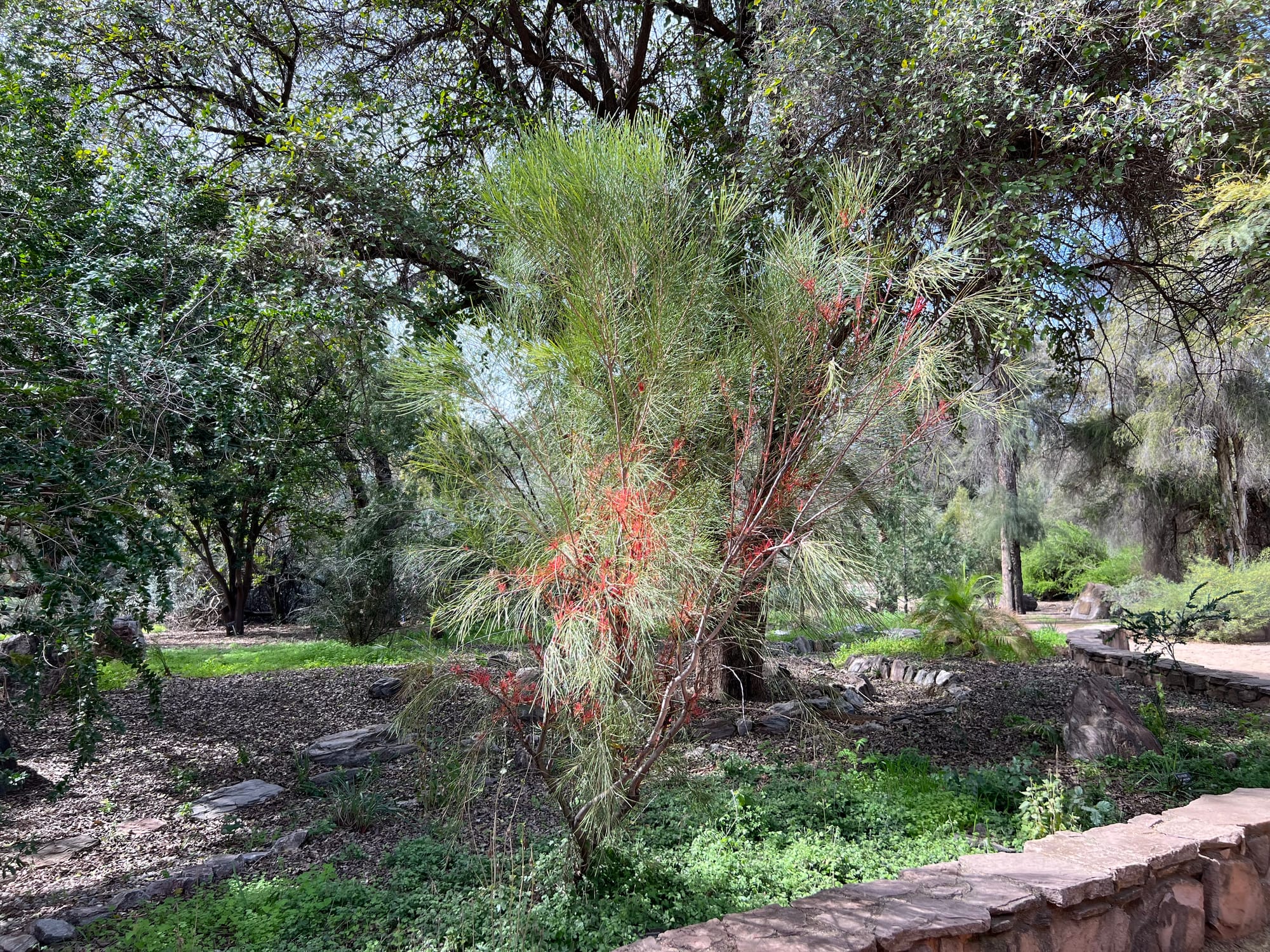
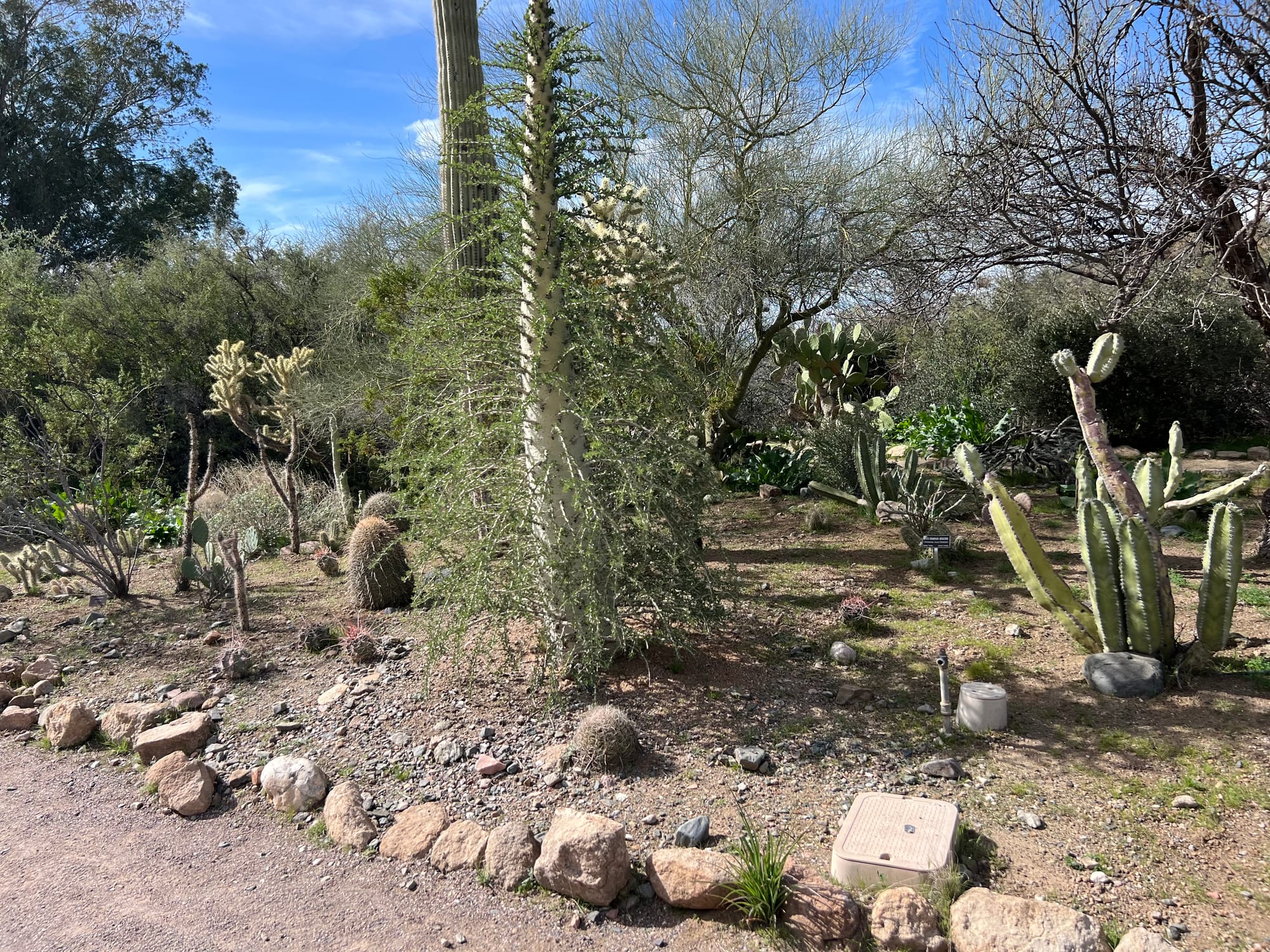
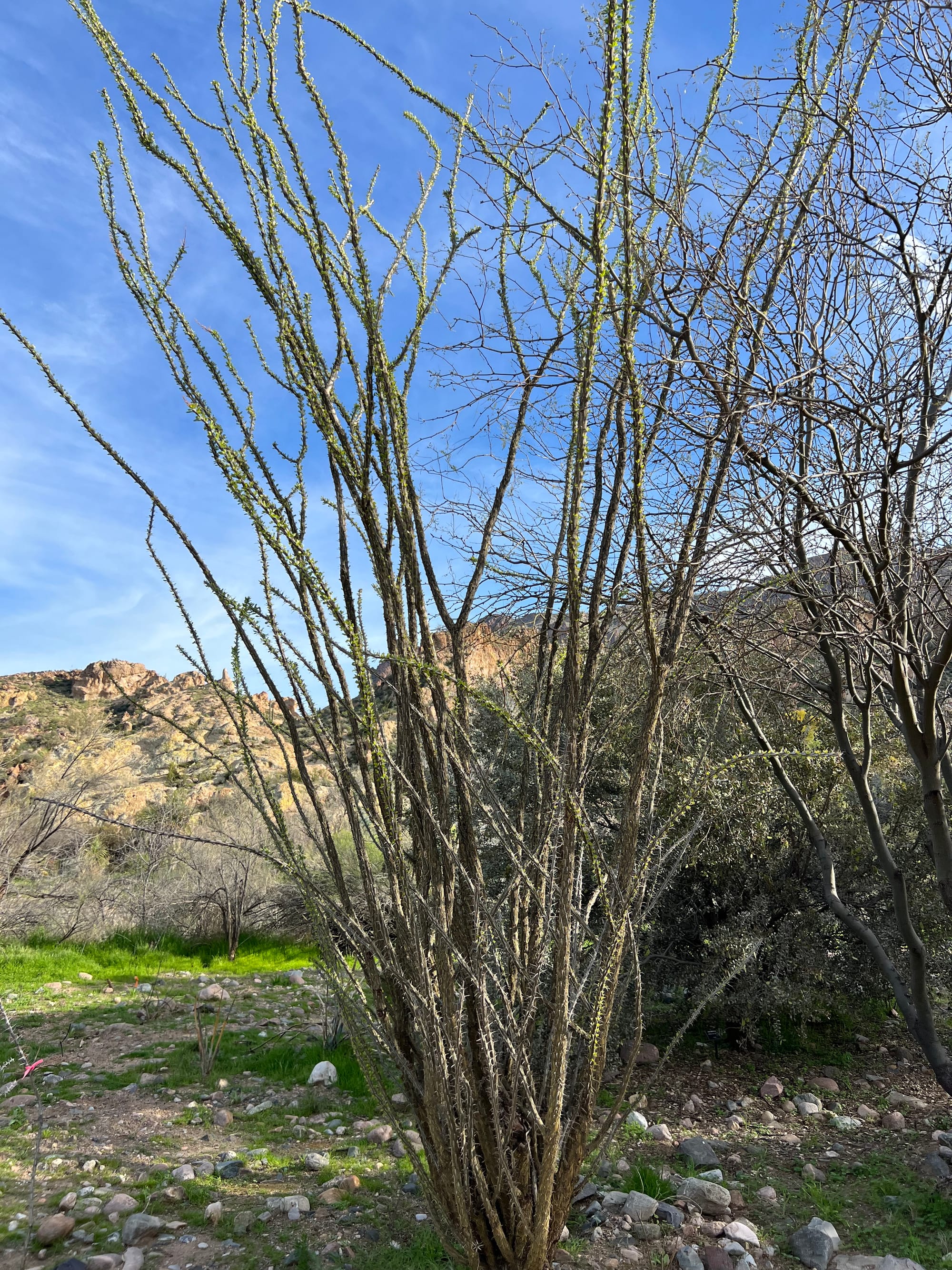
(L to R) Bird's Beak Hakea - Boojum - Ocotillo
Here are some photos of how the Cacti and succulents are being used in residential landscapes of the Gold Canyon, AZ area. There is a quiet simplicity to it.
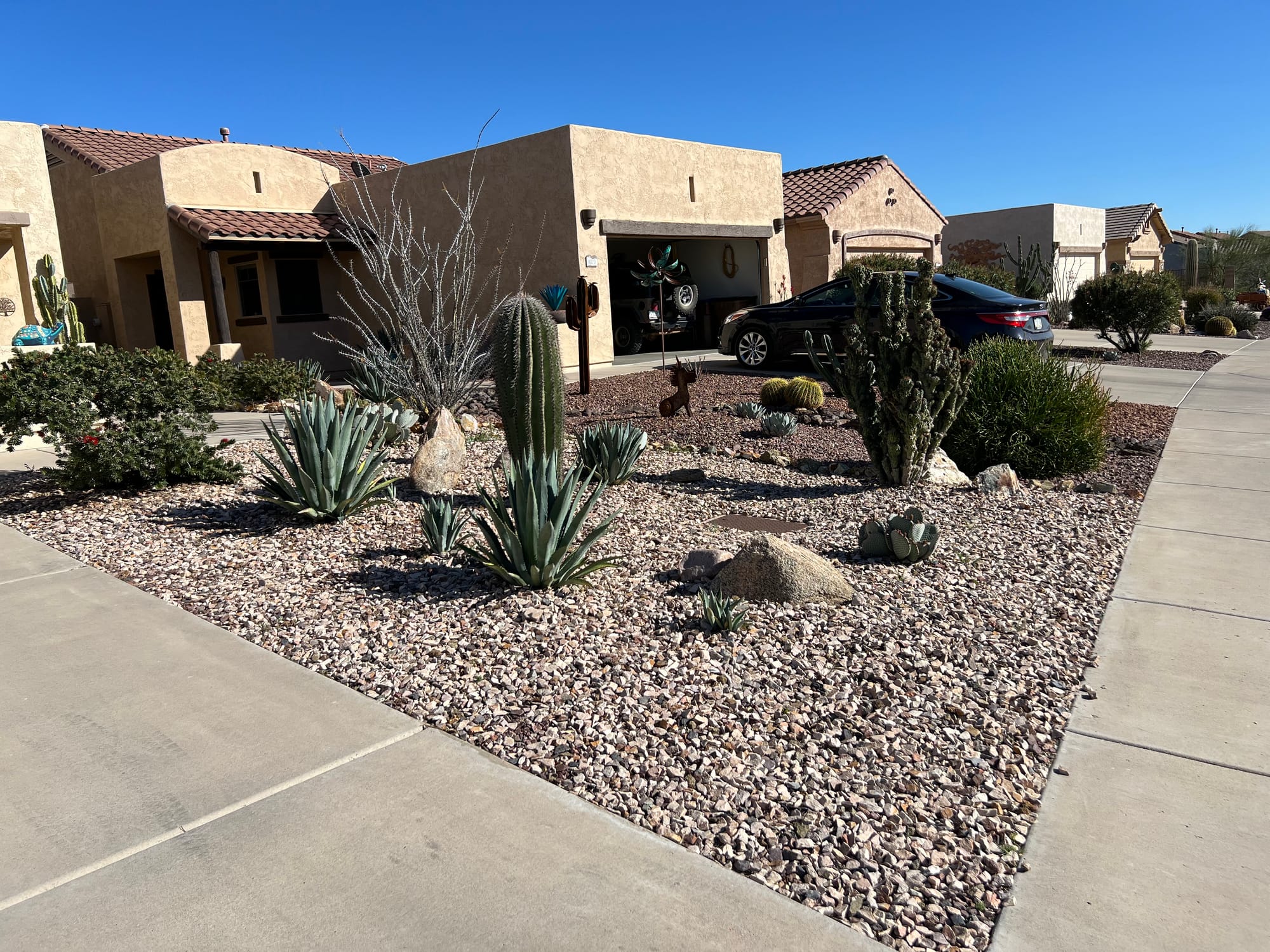
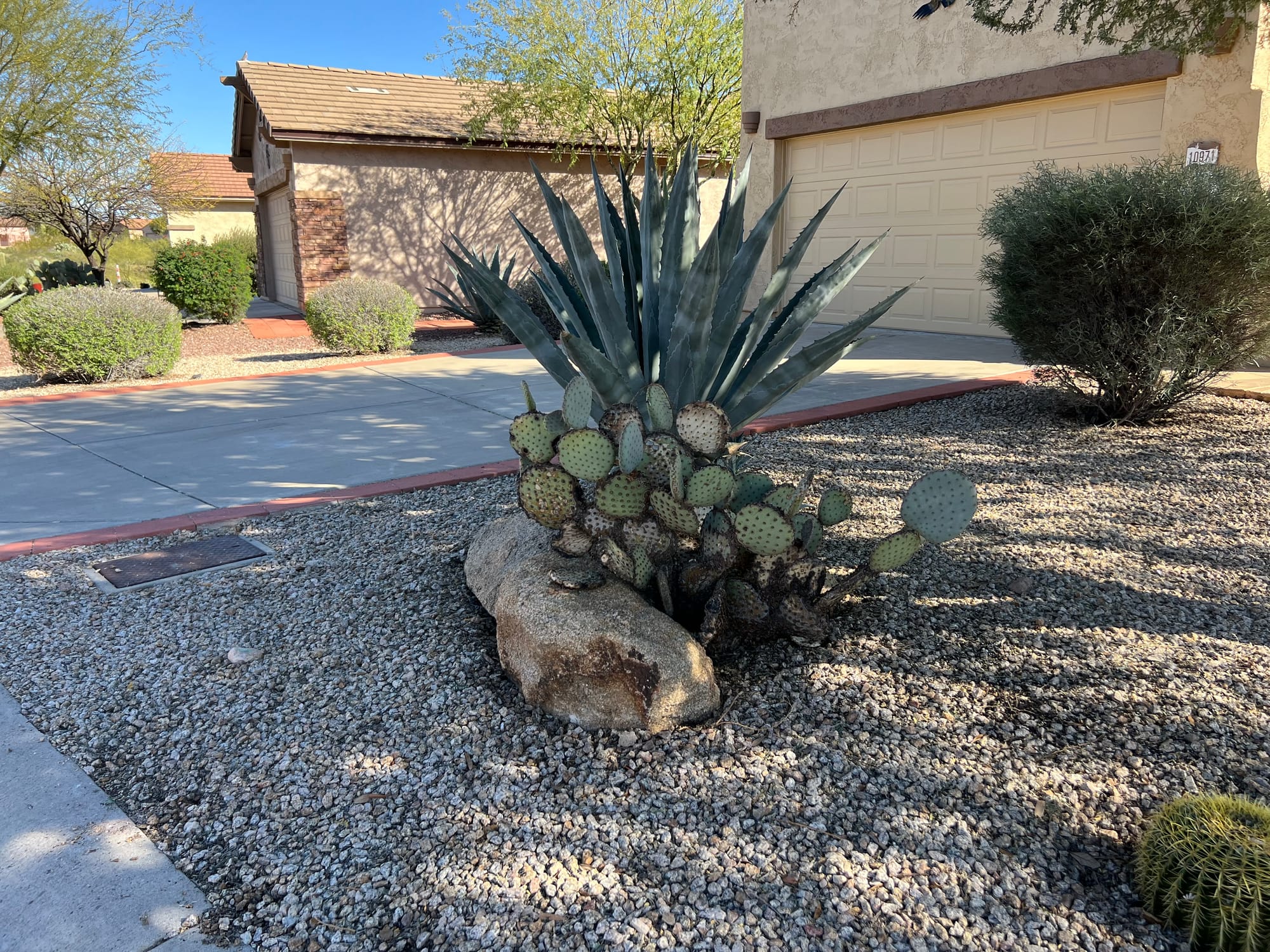
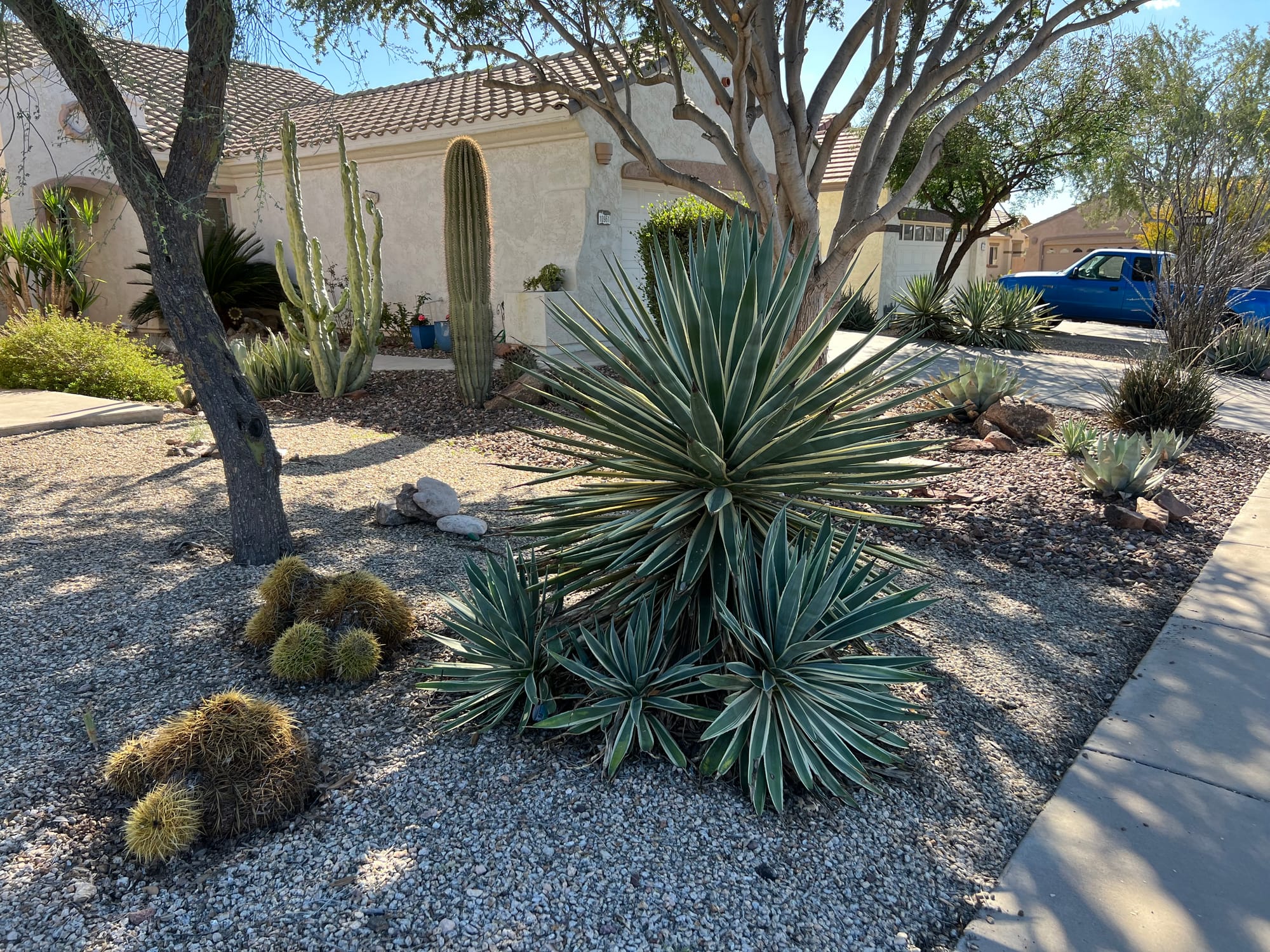
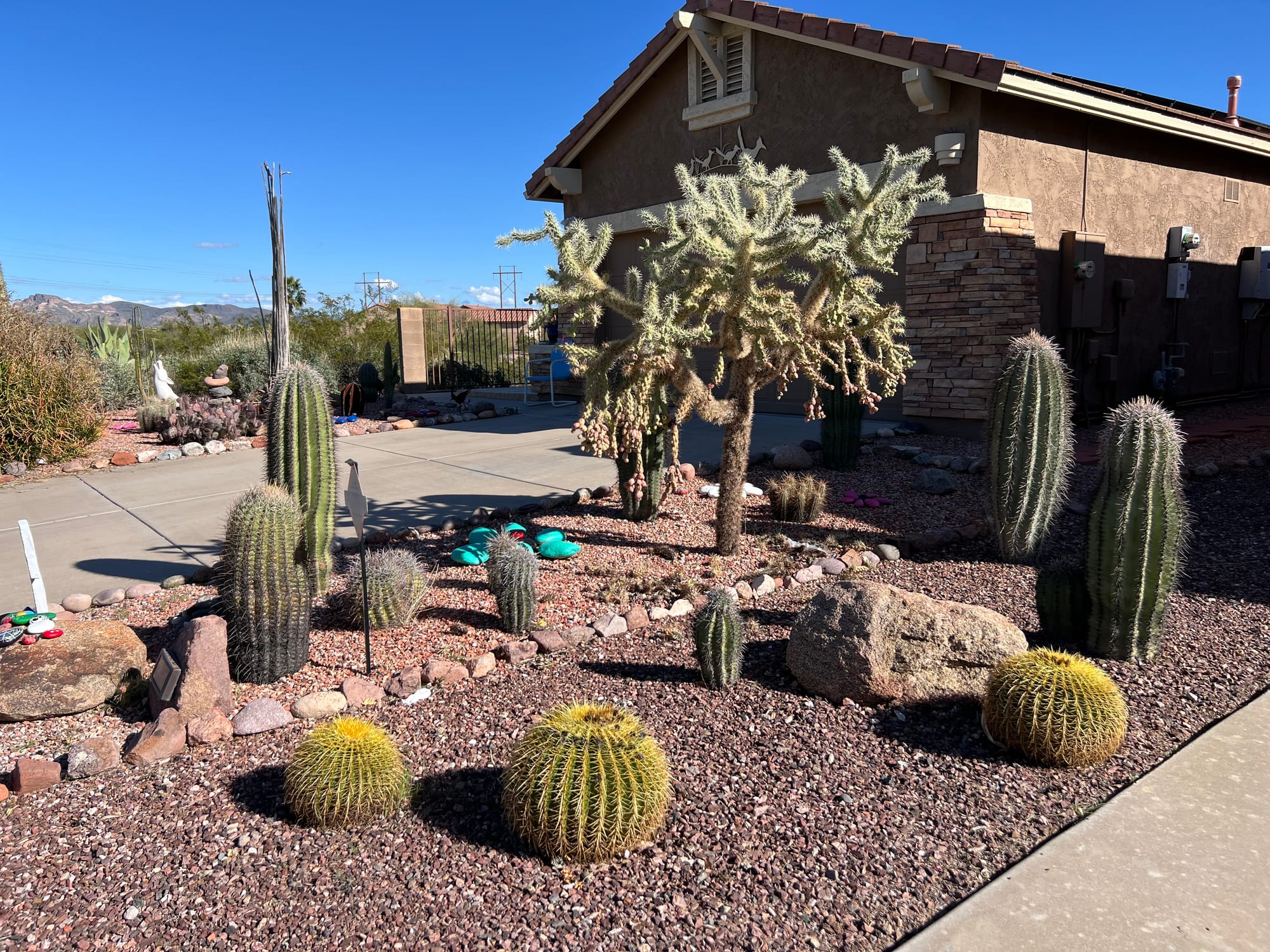
Desert Landscaping
The Blue Palo Verde is the Arizona state tree with its characteristic green bark. Palo Verde means green stick in Spanish. This tree species provides important shade for young Saguaros seedlings as they establish themselves in the desert. The tree is still dormant in this late winter photo but soon it will have beautiful yellow flowers.
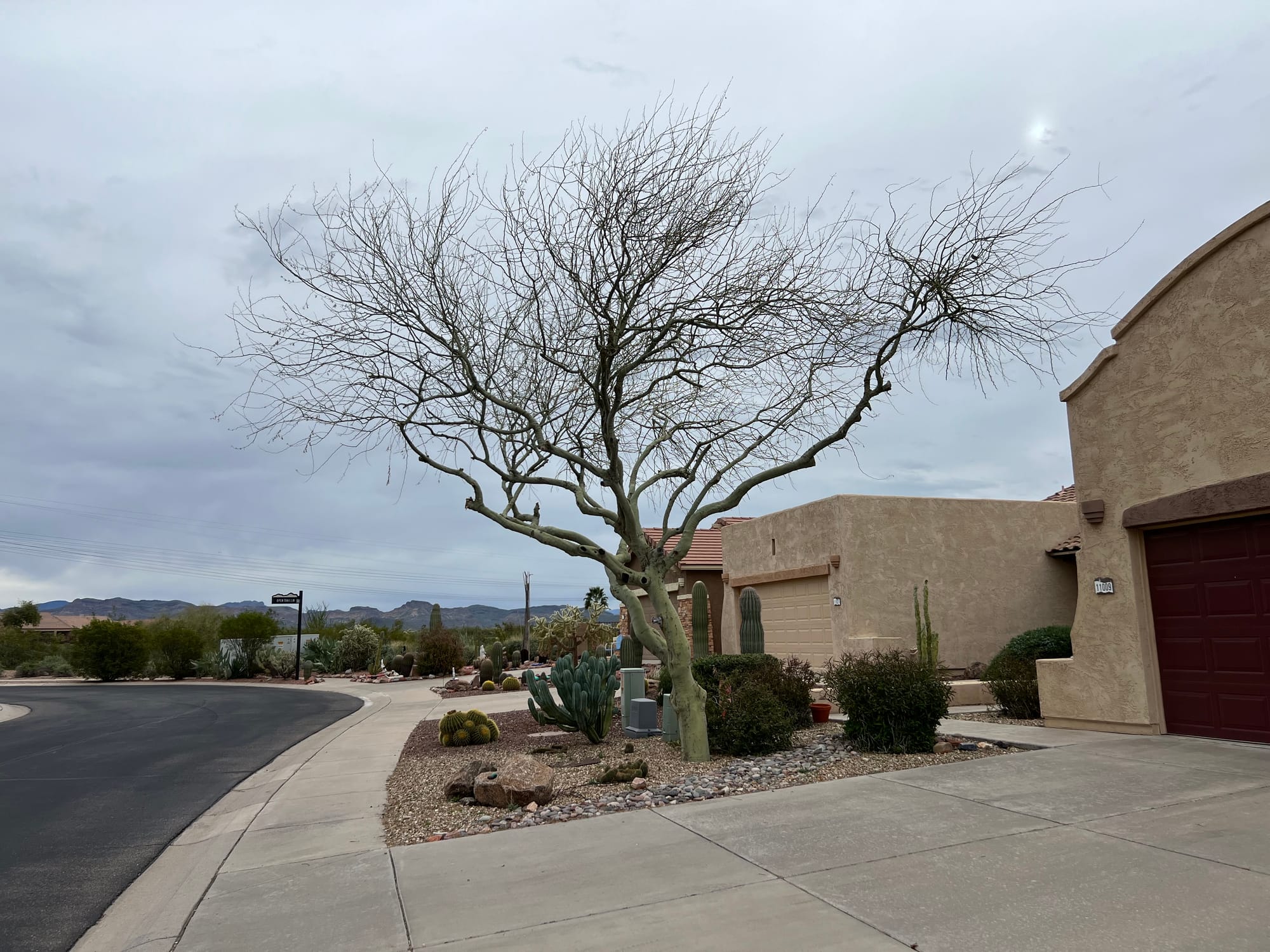

Blue Palo Verde, Parkinsonia florida
Our vacation rental in Arizona had a beautiful view of the Superstition Mountains. We can't wait for our next visit, but the next time, we'll come around when the desert is in bloom!
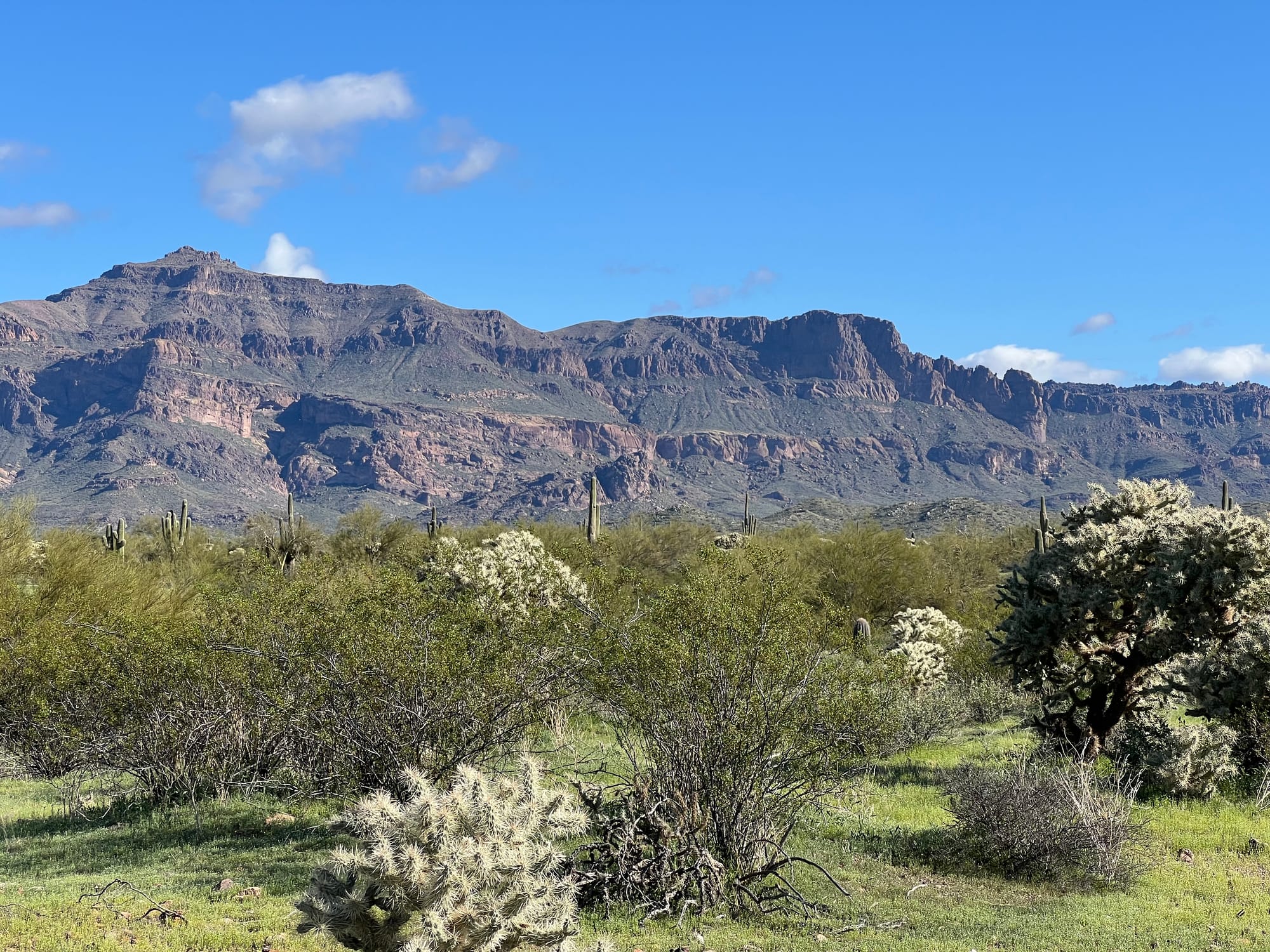
Thanks for stopping by Garden Hike!
Kevin
